
The exhibition "History of St. Petersburg-Petrograd. 1703-1918" - one of the museums in the Peter and Paul Fortress of St. Petersburg.
The exhibition is permanent and is located in a historic building on the territory of the fortress-the commandant's house, which is located between Naryshkin bastion and Peter and Paul Cathedral with the Grand Ducal Tomb.
Initially, this place was a wooden house for the commandant of the fortress, built in 1704. The house was then rebuilt.
The full-fledged building was erected in 1743-1746 on the initiative of commandant Stepan Lukich Ignatiev, designed by military engineer Christian de Marin.
In 1747-1748, a detached stone one-story U-shaped service wing was built on the west side of the house. In 1750, the main building was merged with the wing. In 1874 and 1892, the service wings were added to the second floor.
On the second floor of the main building there were the front and living quarters of the commandant of the fortress garrison, the house church in the name of the Introduction to the temple of the Most Holy Theotokos, and on the first floor and in the wing-the office of the Commandant's Office, kitchen, laundry, servants ' rooms and stables.
On October 25-26, 1917, the field headquarters of the Petrograd Military Revolutionary Committee operated in the building.
The facade of the main building of the commandant's house is decorated in the Baroque style and mostly retains its original appearance.
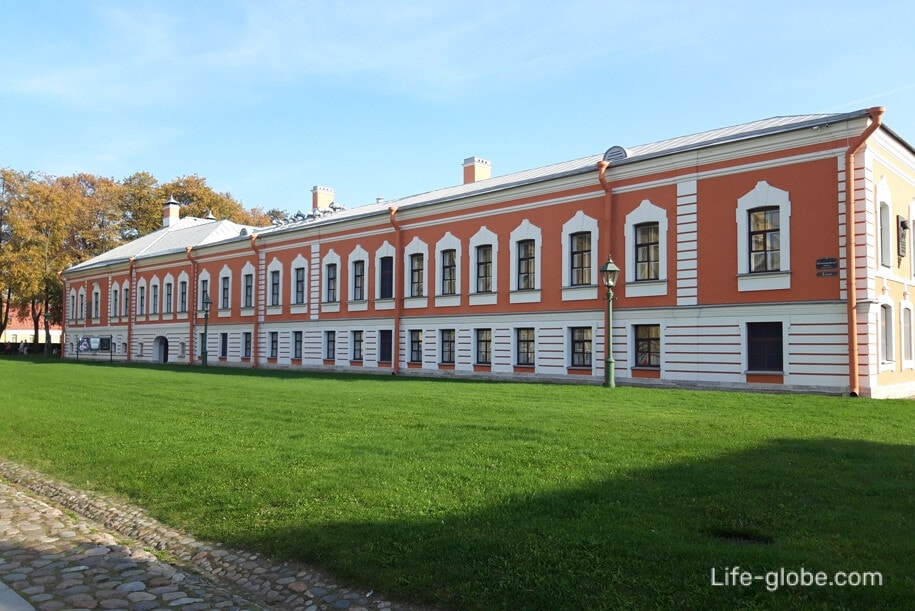
In 2003, for the 300th anniversary of St. Petersburg, the courtyard of the building was covered with a glass roof.

The exhibition tells the story of St. Petersburg in 1703-1918, as the ceremonial capital of the Russian Empire and the largest industrial metropolis of Russia, through the once daily life of the city.
The museum has several backsides, each of which is dedicated to a separate theme in the history of the city: trade and banking, apartment building life and transport, urban costume and multinational cuisine, communications and the subject world of the Art Nouveau era, urban amenities and the emergence of cinema.
The halls feature collections of paintings and drawings, furniture and porcelain; costumes, architectural details, household items and various models that tell about the history of St. Petersburg.
Hall " Front St. Petersburg», which presents items and models from the ceremonial life of the capital, which was finally formed in the first half of the 19th century.
The era of Alexander I was a time of brilliant flowering of the architecture of St. Petersburg classicism, after the victory over Napoleon entered the final stage-the Empire.
The imperial style embodied the power of the Russian state in large-scale urban transformations of the capital. With the completion of the ensembles of the central squares of the city at the beginning of the reign of Nicholas I, St. Petersburg gained a "strict, slender appearance".
In the 1840s, the Empire style was replaced by a new architectural direction - eclecticism. The buildings, decorated in various historical styles, have diversified the architectural environment of the city center.
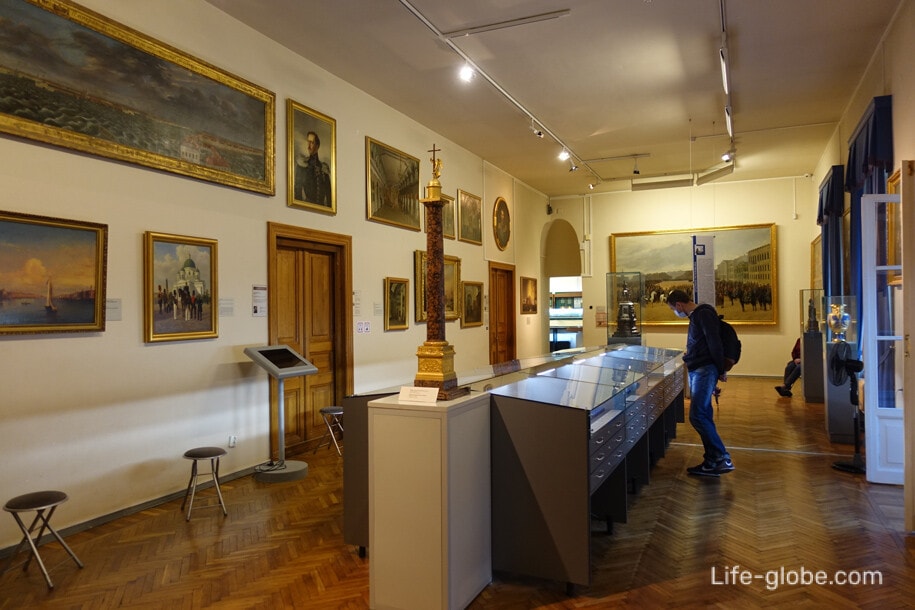
The hall presents::
- model of the rise of the Alexander Column on the main square of the city - Palace Square and the model itself Alexander Column;
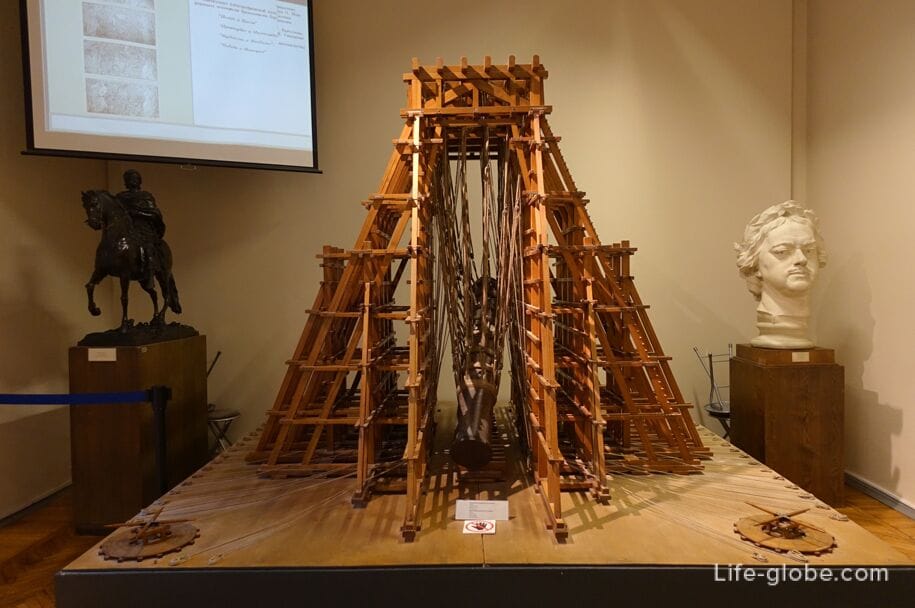
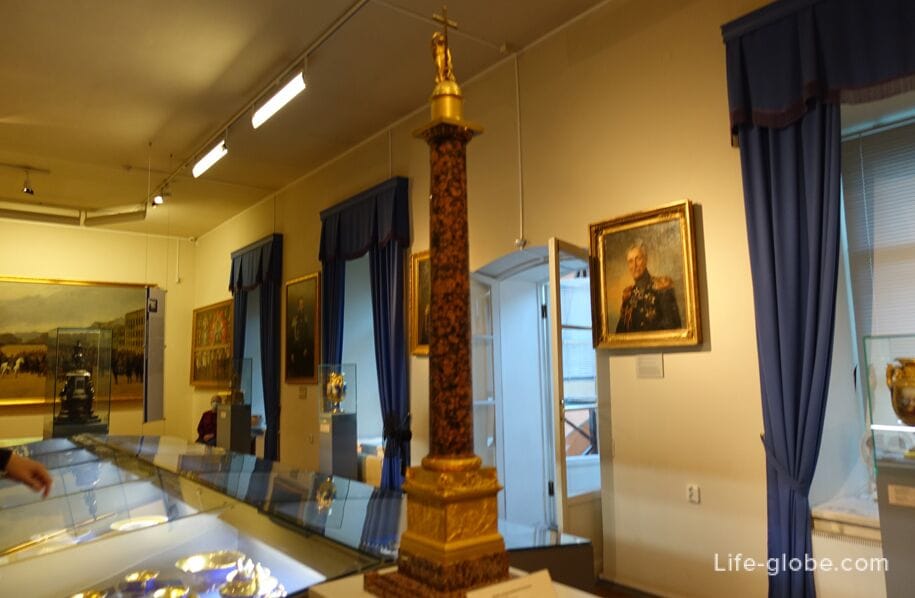
- model of the equestrian monument to Nicholas I, which is located onSt. Isaac's Square;
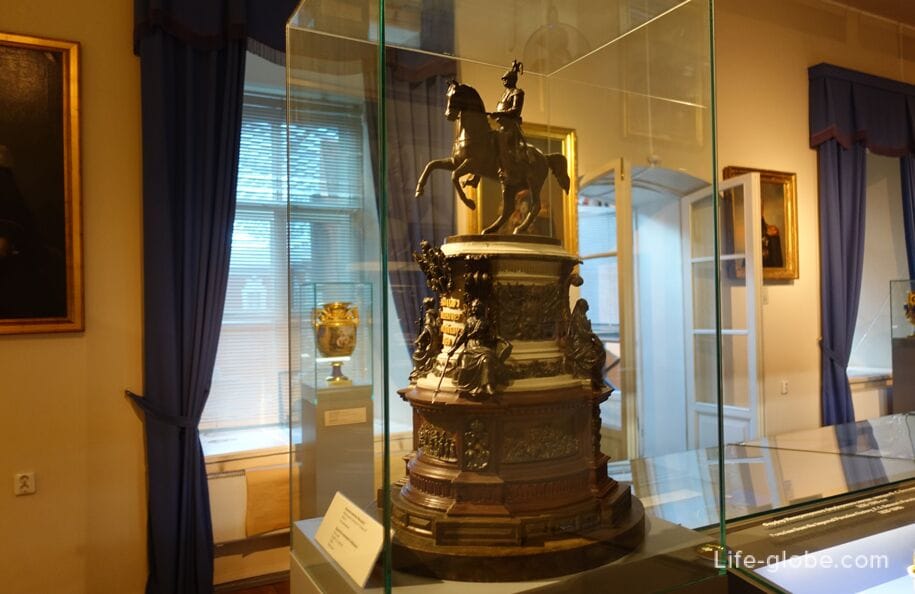
- as well as objects, dishes, paintings, portraits and sculptures from the history of the formation of St. Petersburg as the ceremonial face of the country.


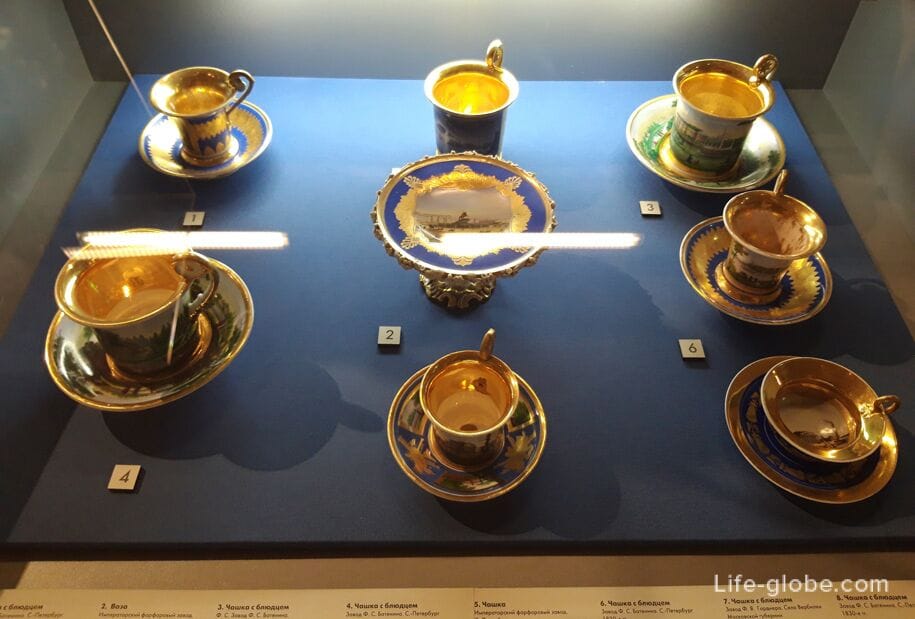

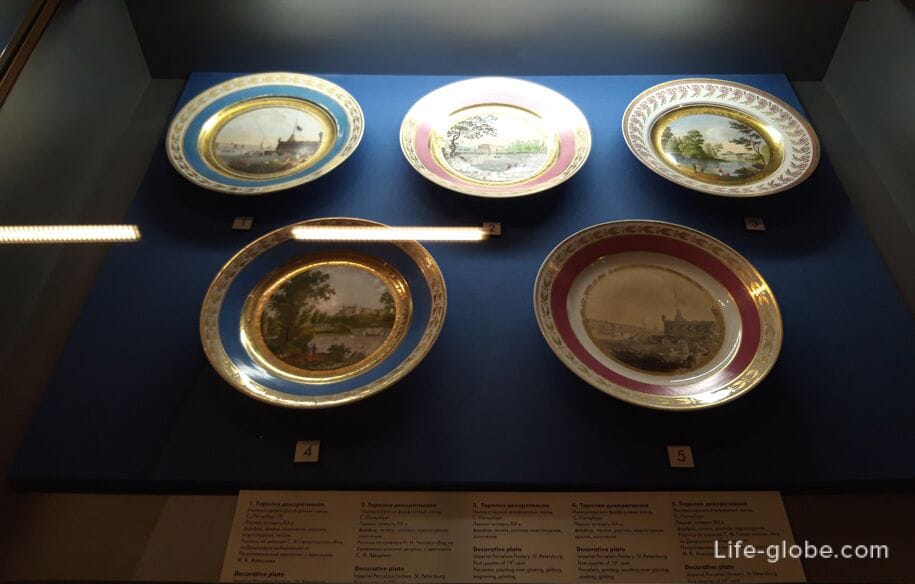


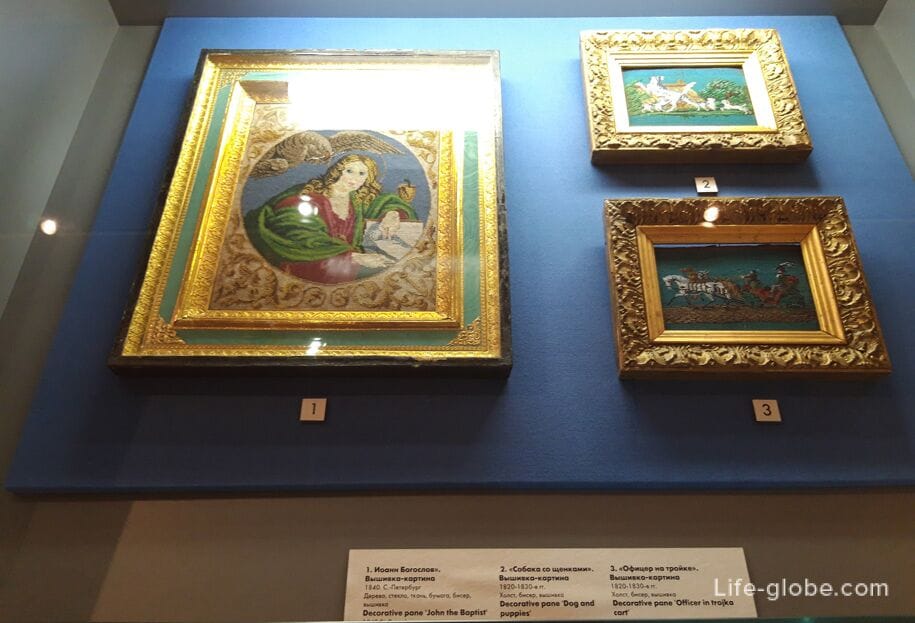
The hall "Nevsky Prospekt", which tells how the ceremonial appearance of the main street of St. Petersburg was formed - Nevsky Prospekt.
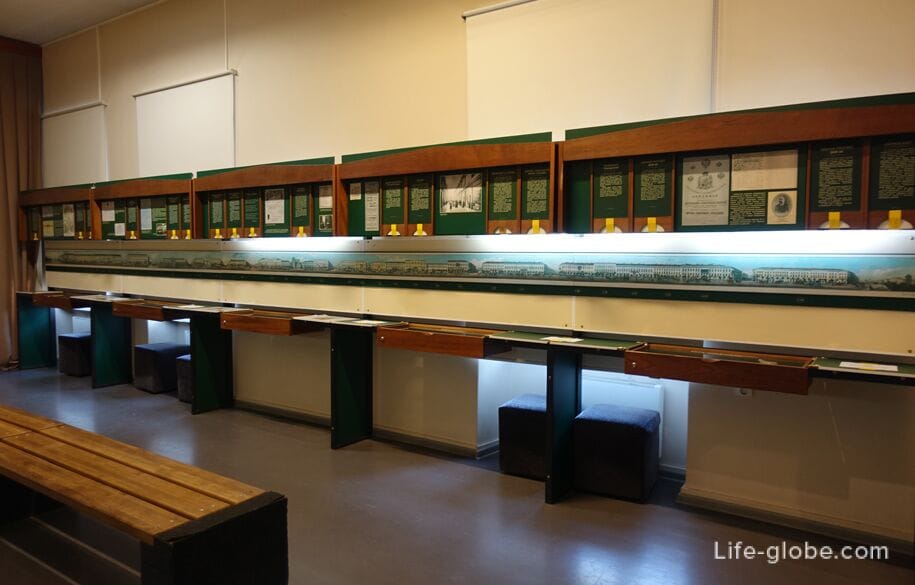
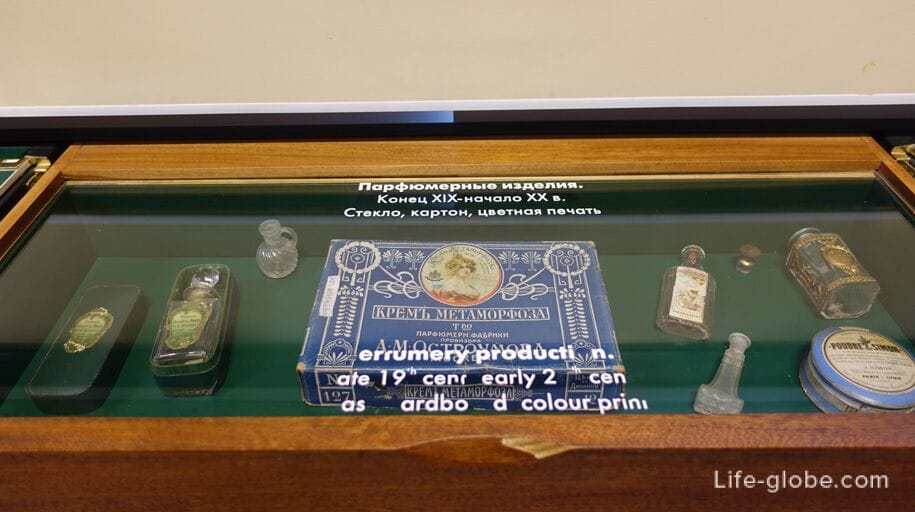
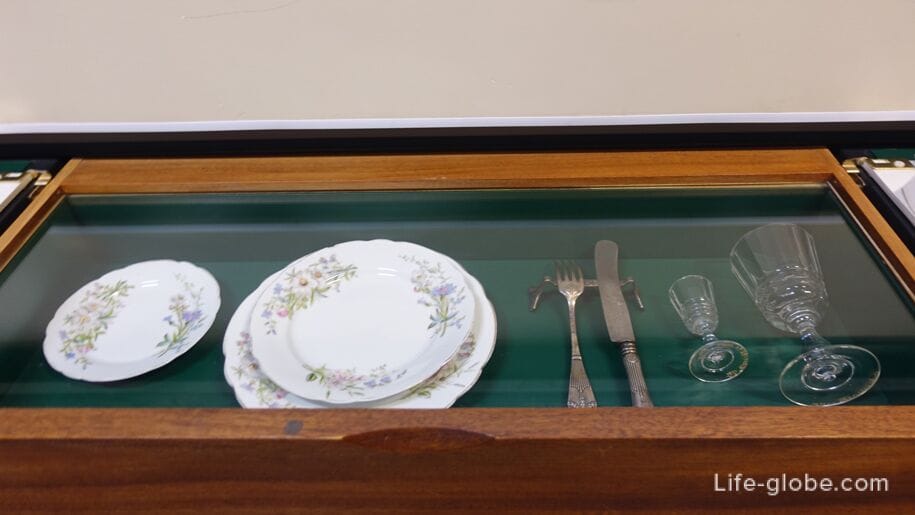

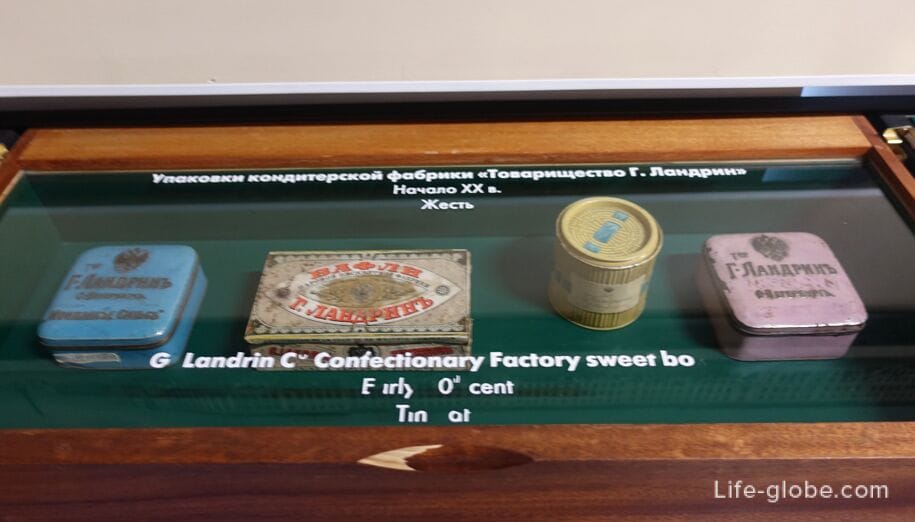
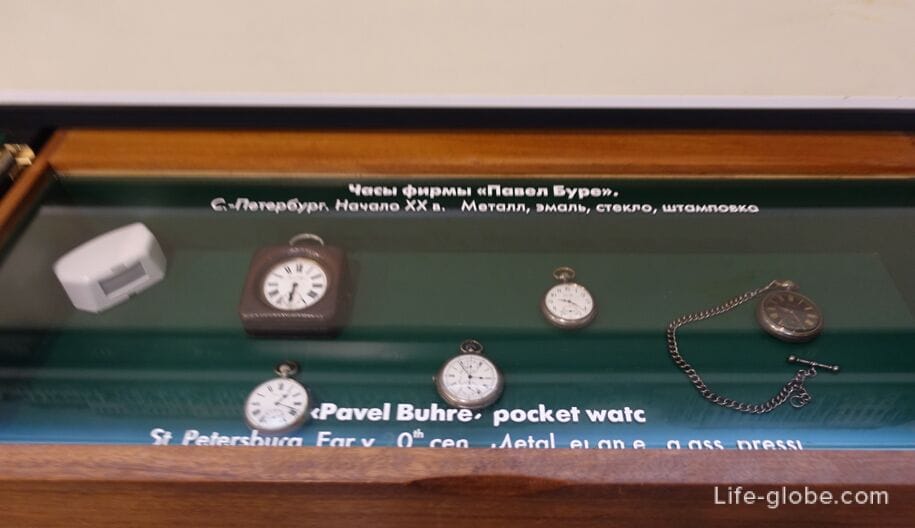


Hall "Waterways and railways".
Until the middle of the 19th century, the main transport route of St. Petersburg was the Neva River, which connected the waterways of Russia and Europe. Cargo destined for export was delivered to the capital through the channels. Warehouses and warehouses were located along the Neva River, and cargo barges stood on the canals and small rivers.
Since the beginning of the 18th century, water passenger transport has been of great importance for St. Petersburg. In the 1850s, single carriers that carried passengers to certain parts of the city were replaced by steamship companies. From the piers of Vasilyevsky and Gutuevsky Islands, passenger steamers went to distant Russian and foreign ports.
In 1857, the first railway in Russia connected St. Petersburg with Tsarskoye Selo and Pavlovsk. By the end of the 19th century, several railway lines connected the capital with Central Russia, the Baltic States, and Western Europe.
In 1914, the water and land highways of the city were connected into a single transport hub.
The hall presents models of steam locomotives, river vessels, as well as some parts of transport and road items.
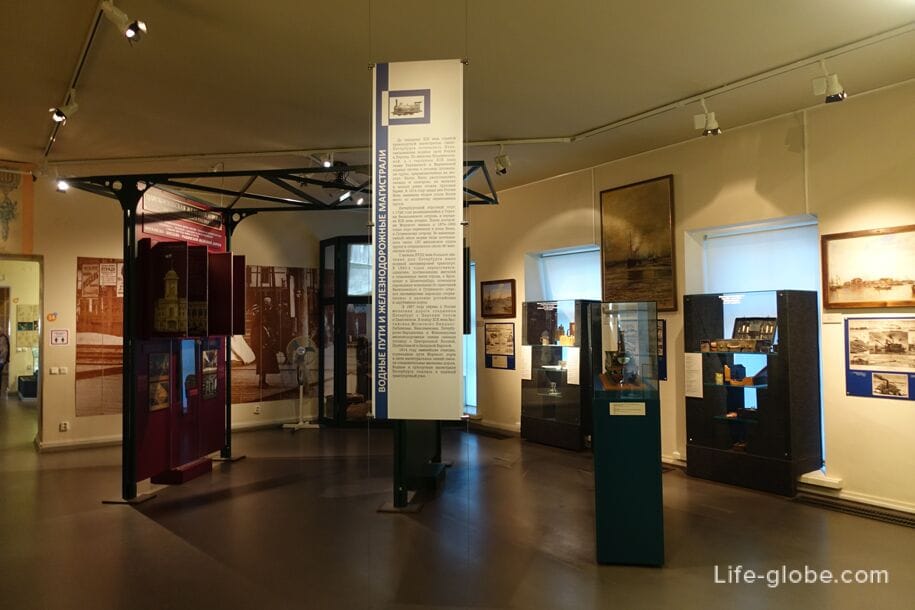
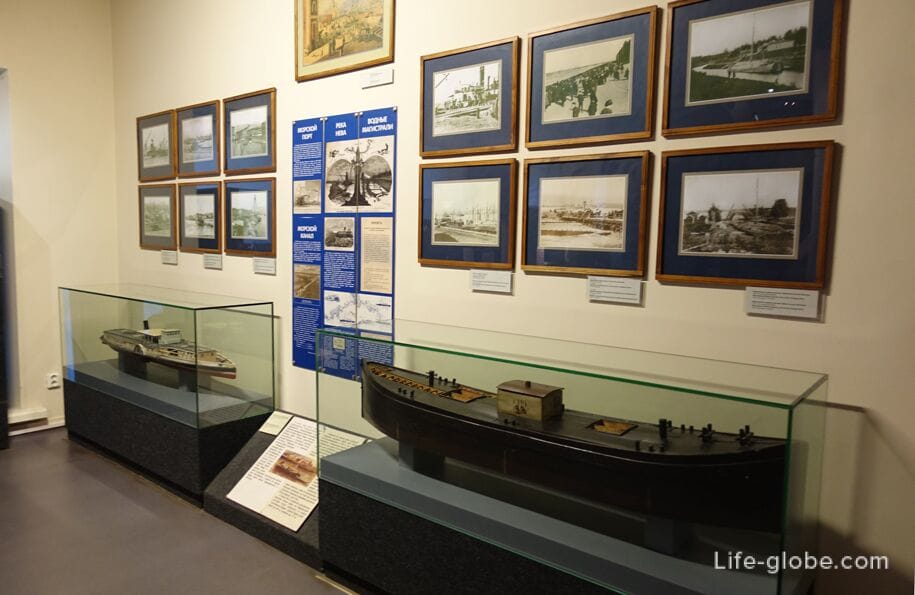
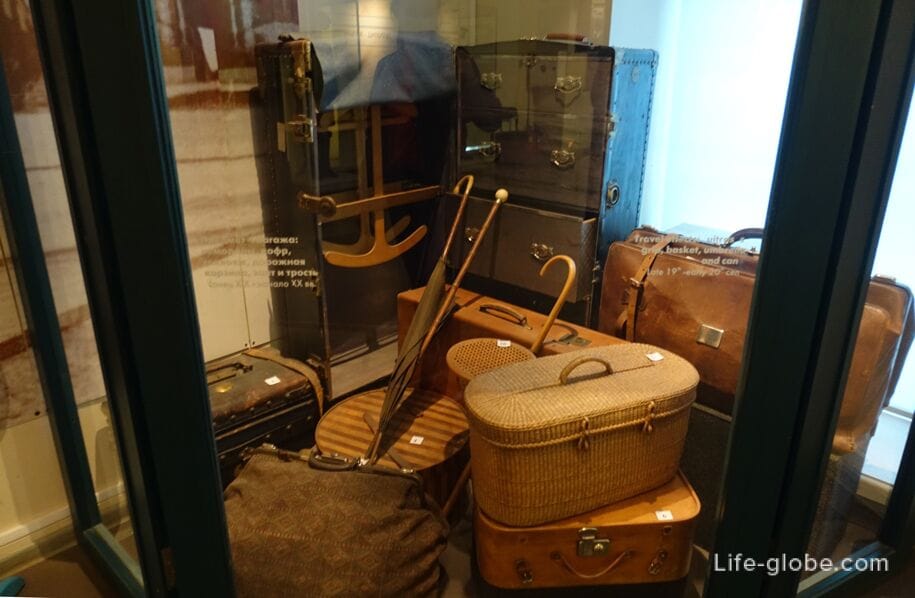
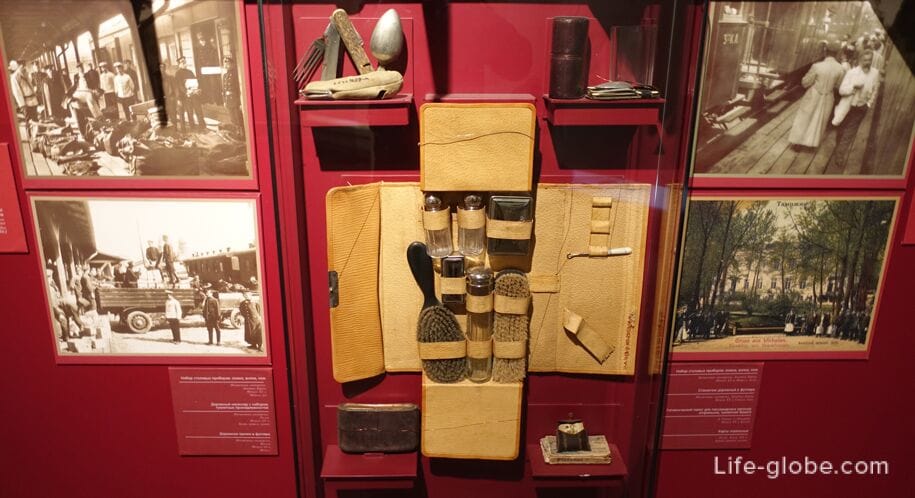
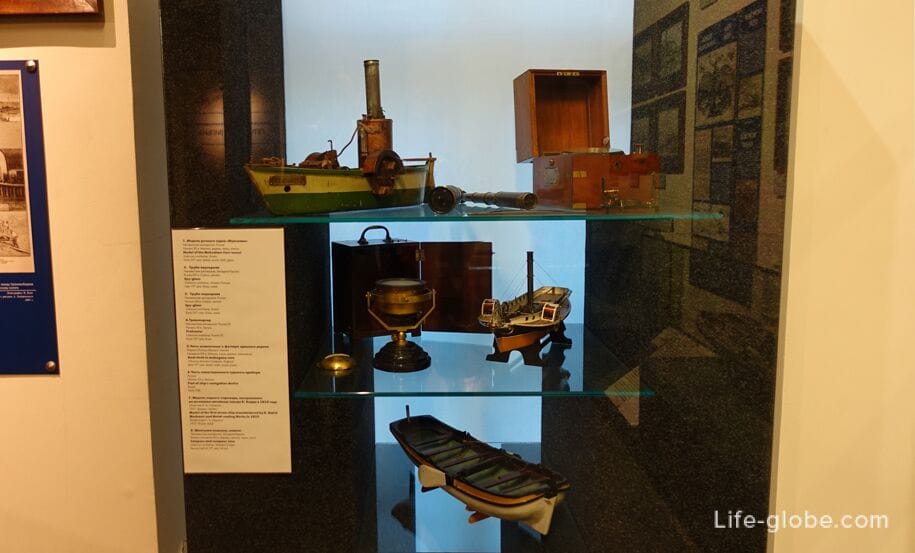
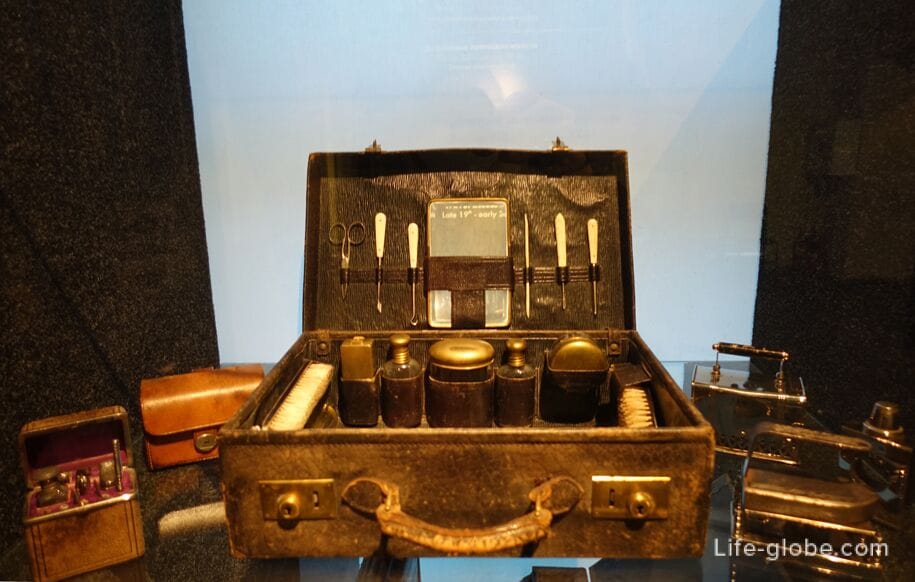
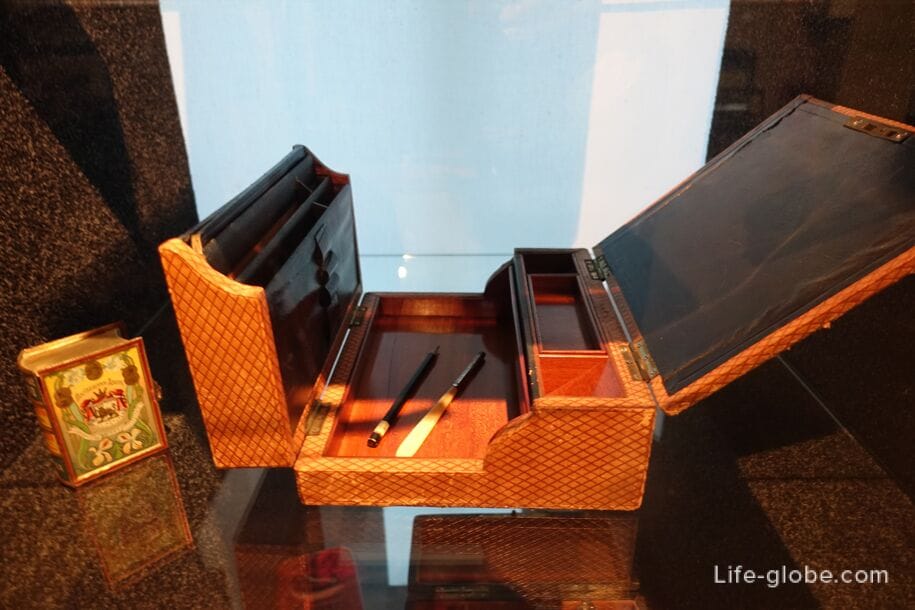
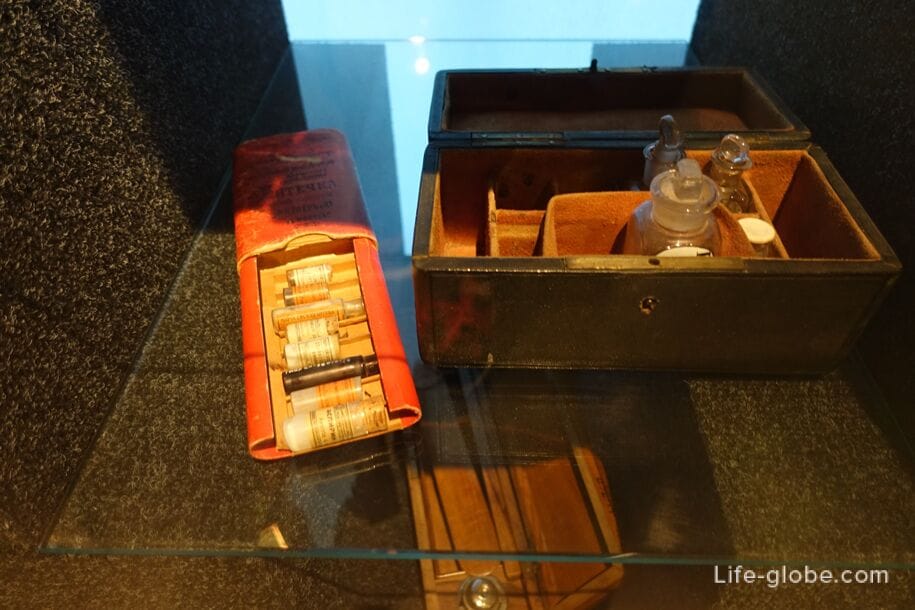
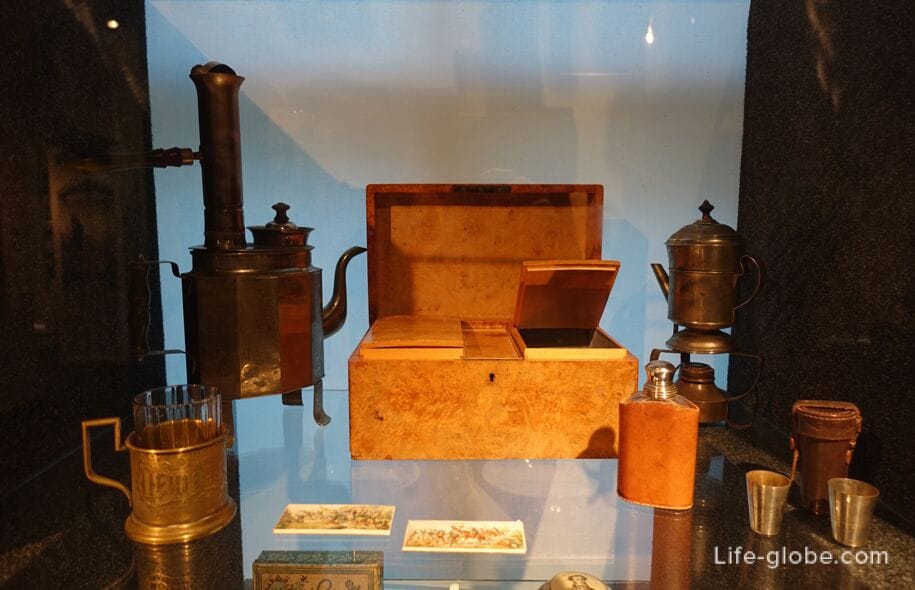
Model of a locomotive of the Tsarskoye Selo railway of the sample of 1837. Wood and metal, 1975.
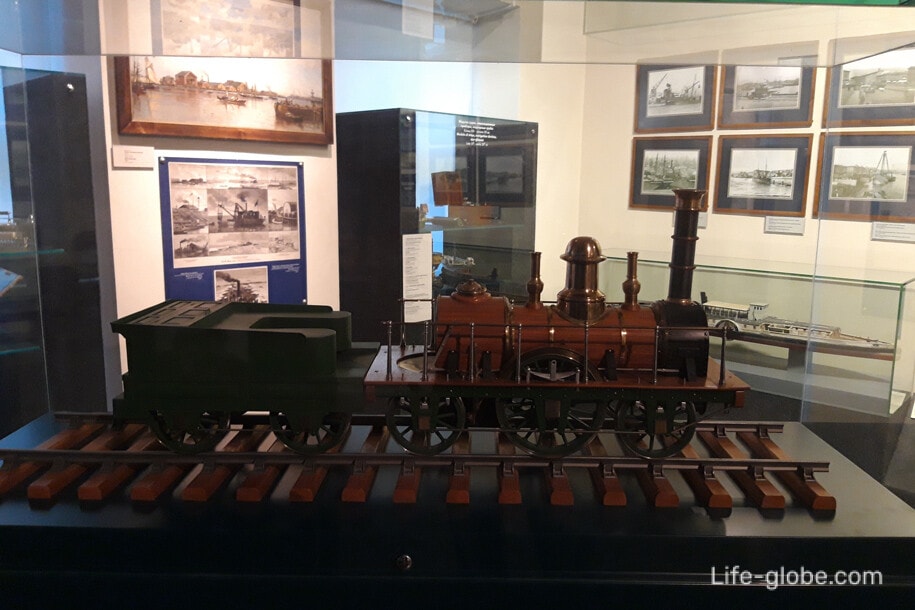
Hall " Fashion and costume», which presents various clothing from the history of St. Petersburg - men's and women's, as well as accessories and sets used in the manufacture of clothing.
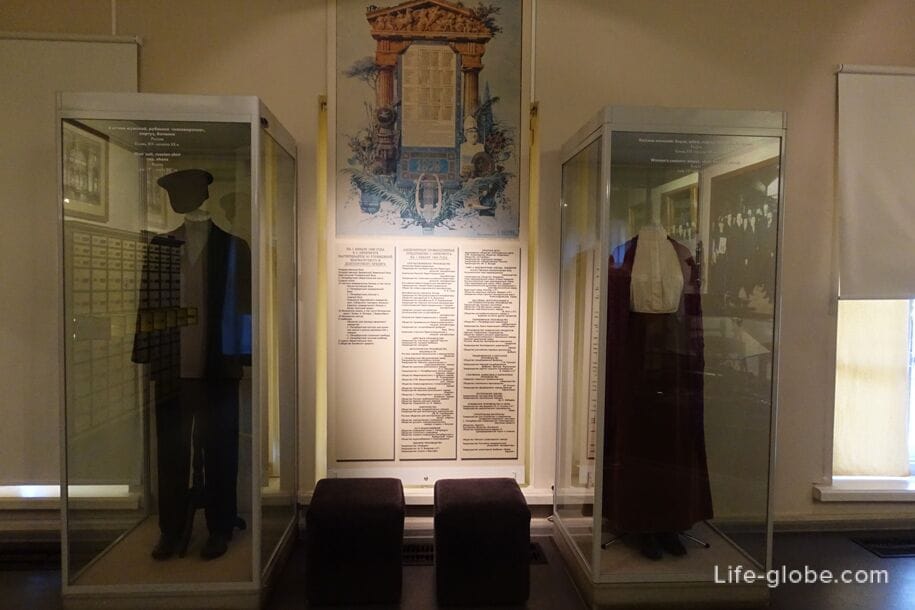
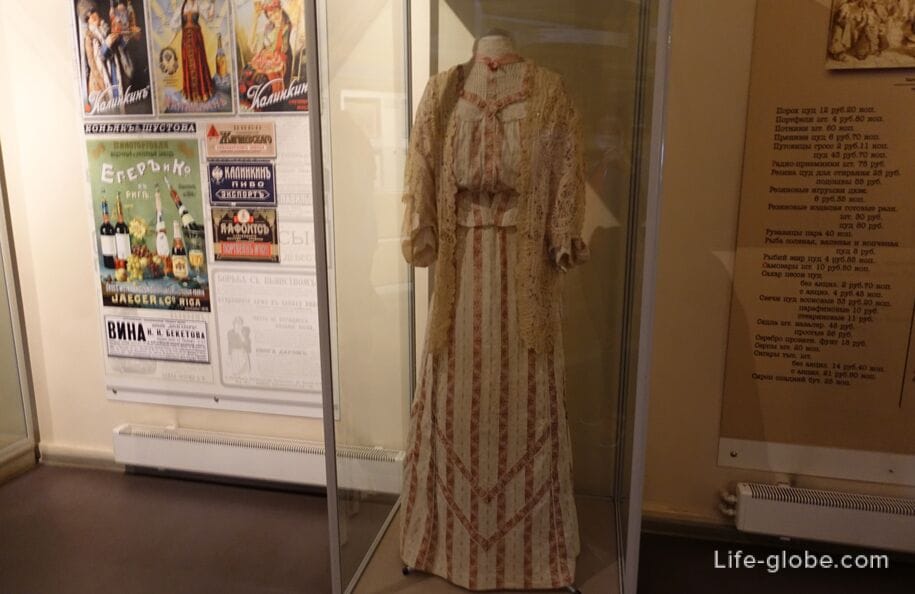

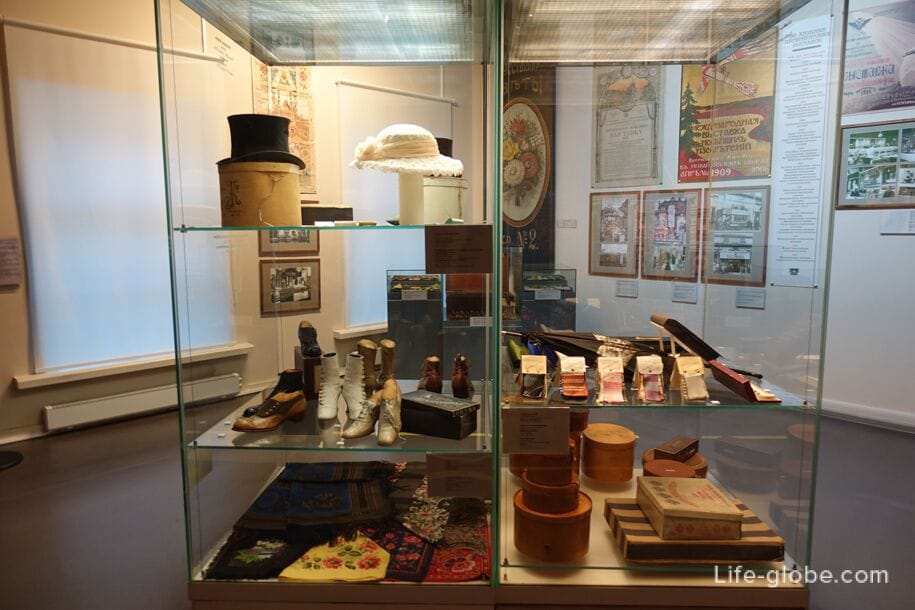
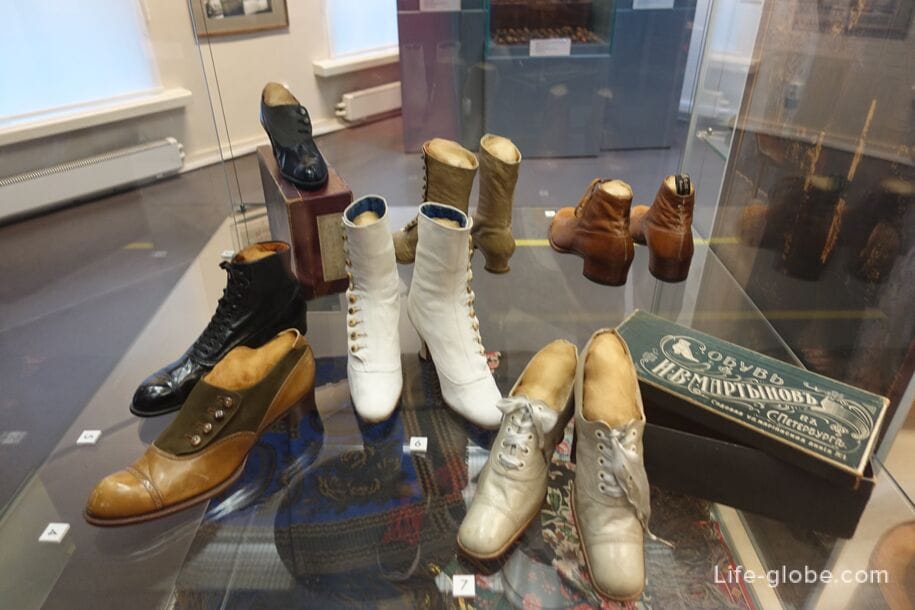
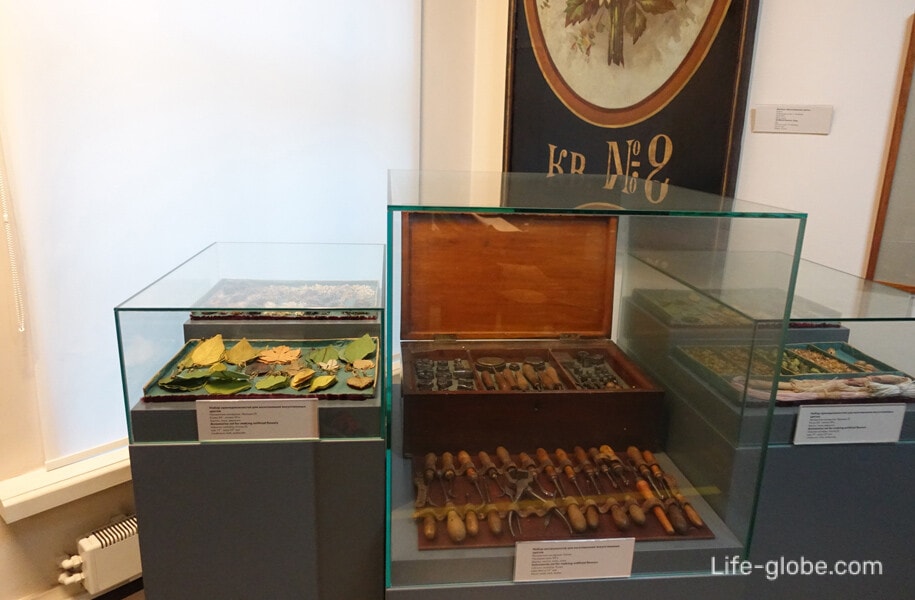
Hall "Trade Petersburg".
By the middle of the 18th century, the St. Petersburg Trade Exchange had become the largest center of wholesale trade in Russia.
Since 1816, all major transactions were made in the Exchange building on the Spit of Vasilievsky Island. By the end of the 20th century, the trade turnover grew so much that specialized exchanges appeared in the city: grain, cattle, oil, and wine. They were under the jurisdiction of the Ministry of Finance and were managed by the Exchange Committee.
By 1914, there were about 16,500 commercial enterprises in St. Petersburg, of which more than 90% were retail. Until the mid-19th century, the centers of the city's retail trade were markets and Gostiny dvor. Then came the department stores. The main shopping street was Nevsky Prospekt.
By the beginning of the 20th century, in the city center, numerous signs hid the facades of buildings, illuminated shop windows, under which the first floors of houses were given, stretched in rows along the streets, and curbstones with advertising posters stood on every corner.
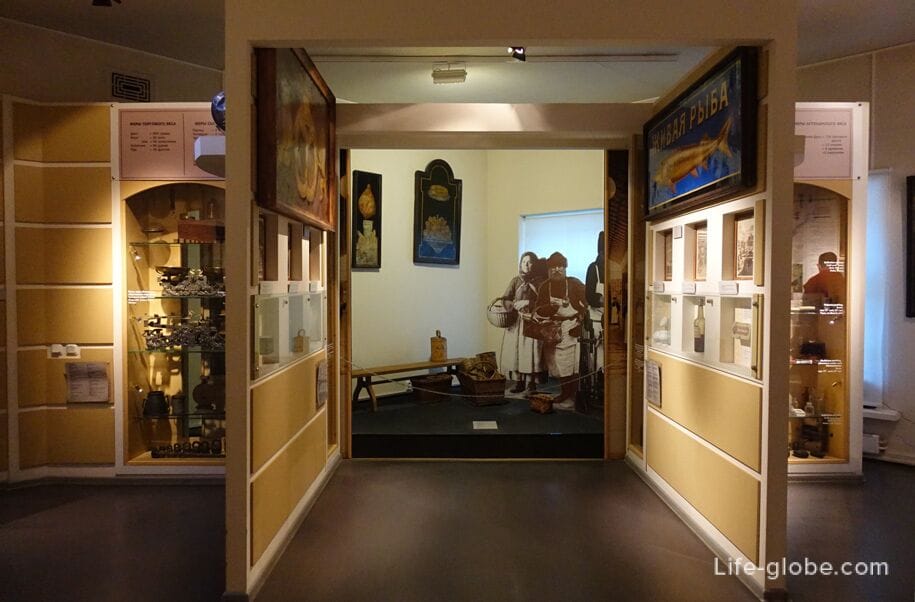
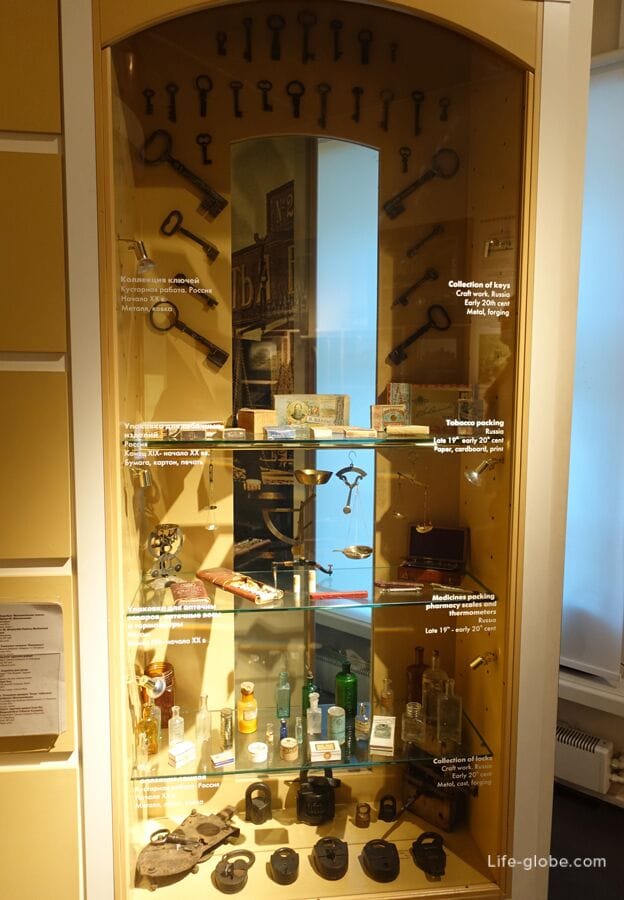
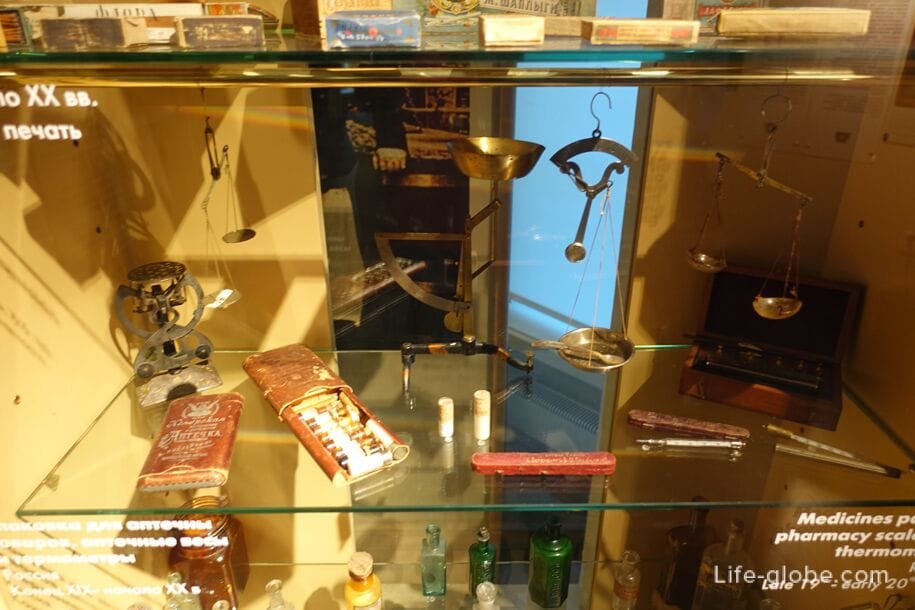
Office
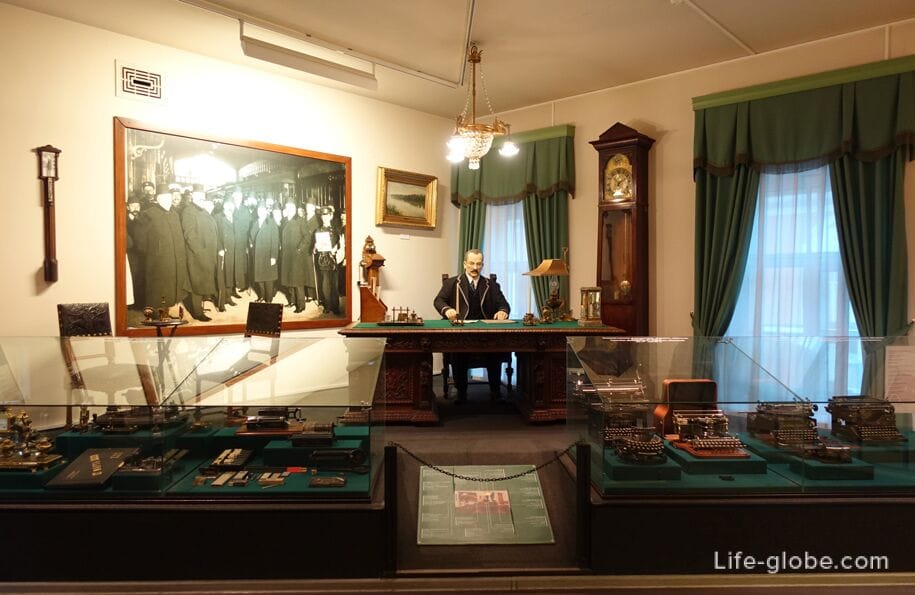
The Apartment Building hall.
Apartment buildings "for tenants" appeared in St. Petersburg in the 18th century.
By the middle of the 19th century, they were the most widespread, since this type of building could meet the need for housing, the rapidly growing population of the capital.
Renting apartments in apartment buildings brought huge profits and, in an effort to increase income, entrepreneurs built up land plots more and more densely. Building regulations allowed to erect yard wings at a distance of up to two fathoms (4.26 m) from each other. This is how the famous St. Petersburg courtyards-wells appeared.
The size and comfort of the housing was very diverse. In the front buildings of the buildings were placed multi-room "master" apartments. For the middle class, these were three-or five-room apartments. In the courtyard wings were located cheaper apartments and often they were rented out by the room, while the tenant could rent out the "corner". In 1900, more than 8 thousand poor residents of St. Petersburg lived in basements and attics of houses.
The hall presents a model of an apartment building, where through the windows you can see various housing options and the situation of apartments, rooms or corners.
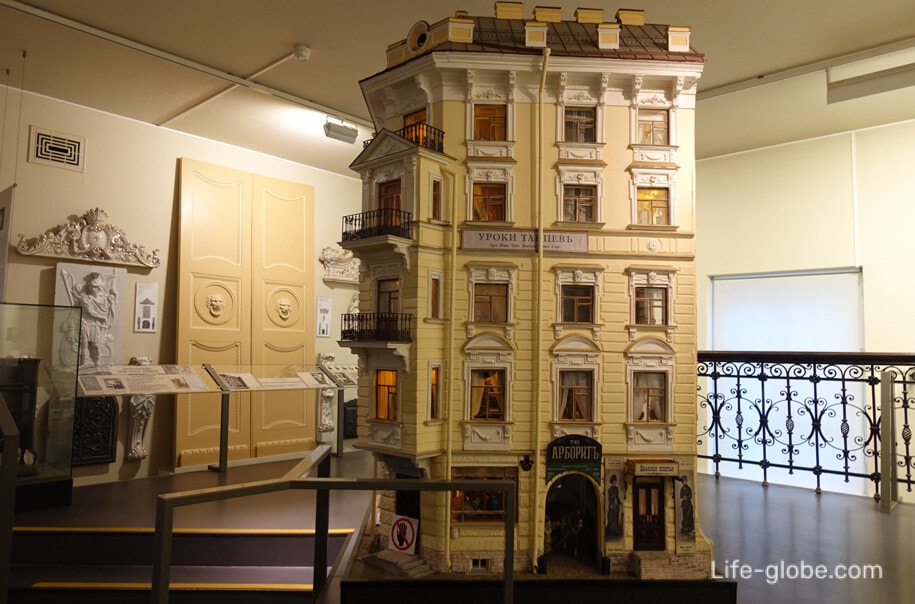

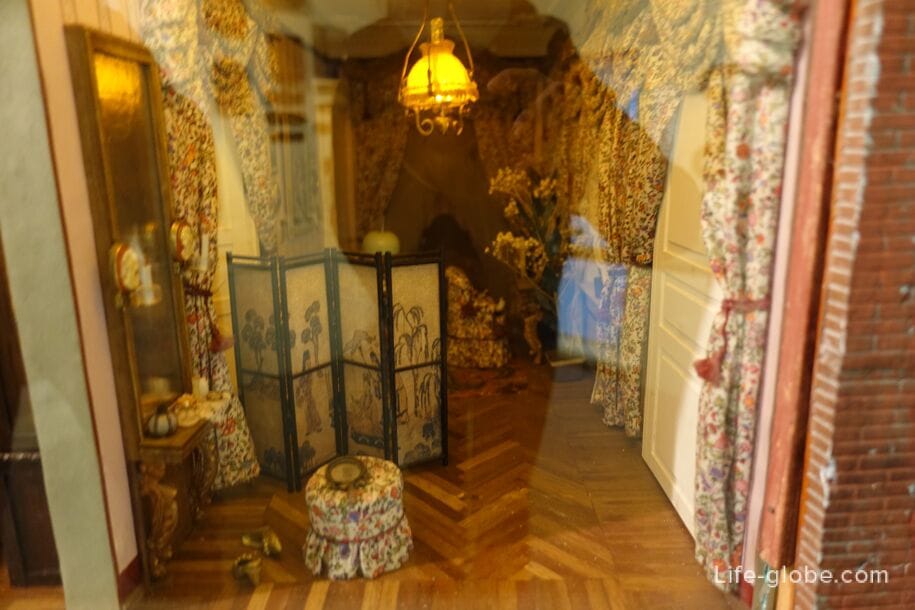

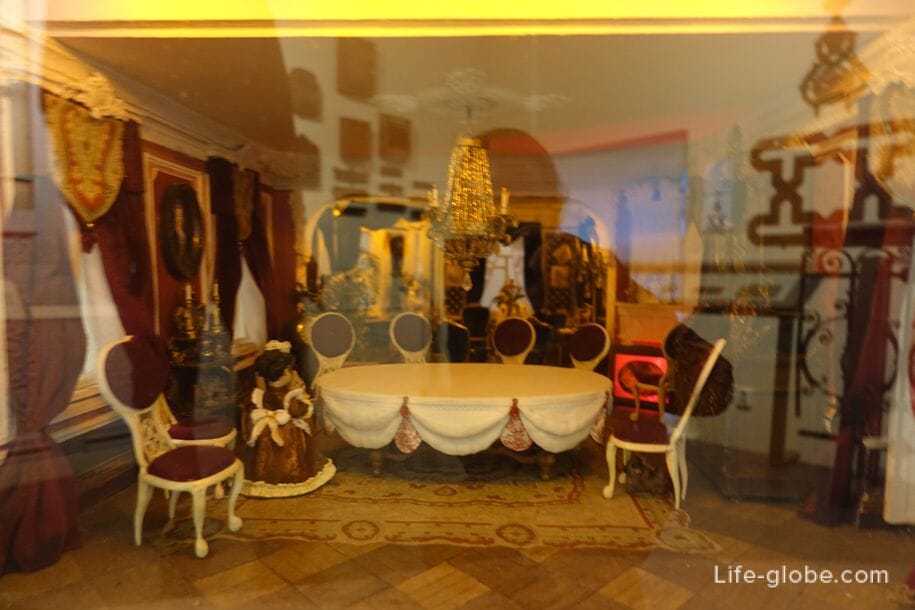

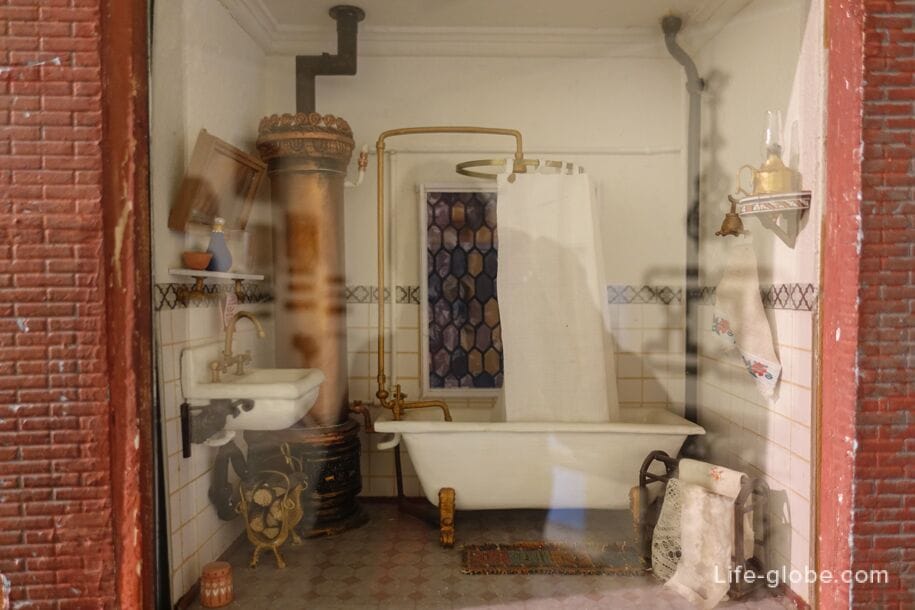

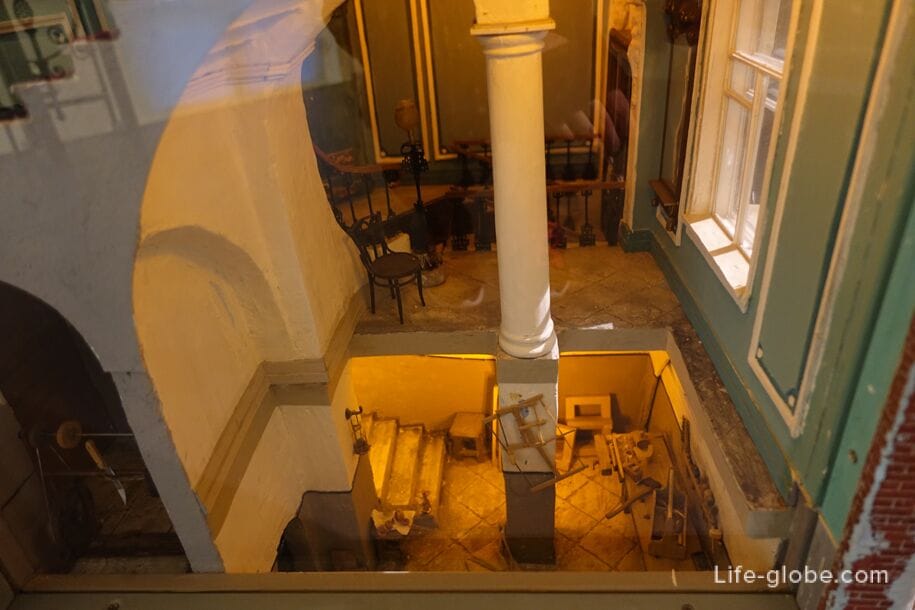
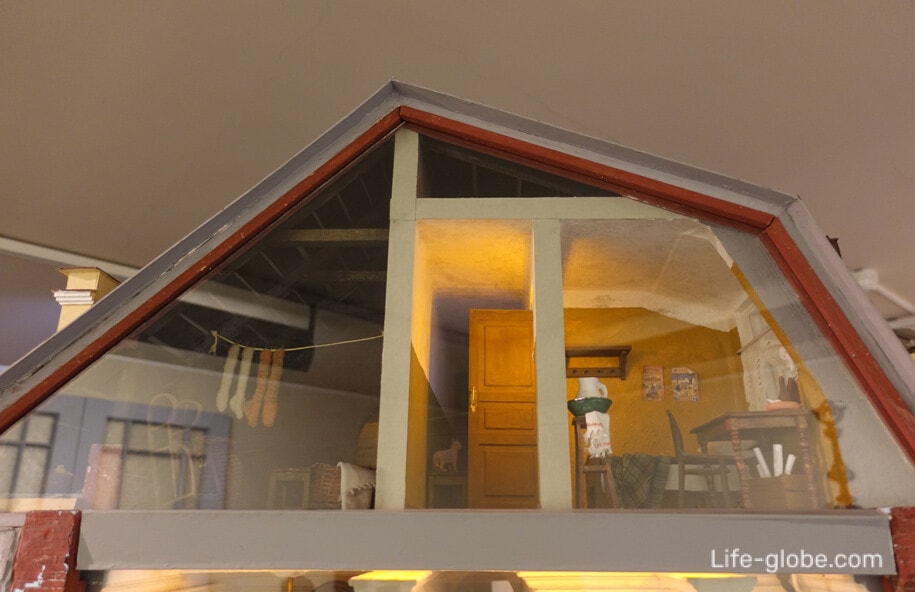
Hall "Petersburg cuisine".
The kitchen and dining room were the hearth of every St. Petersburg apartment.
At the end of the 19th century, gas stoves were installed in the kitchens of the capital, which helped to realize culinary fantasies without the help of servants, although well-off families continued to keep cooks.
At the beginning of the 20th century, kitchens were equipped, among other things, with various utensils: mixers, meat grinders, baking pans, electric appliances and refrigerators - wooden boxes, at the bottom of which a piece of ice was placed.
Common meals, as a rule, were held in the dining room. Both family and formal dinners were a ritual with strictly observed rules: cutlery laid out in strict order, freshly ironed starched tablecloths and napkins, etc. For meals, the table was served with the best porcelain and silver.
The menu, especially festive, was varied. The mixture of Russian, Slavic and Western European recipes made up a unique variety of St. Petersburg cuisine. Housewives wrote new dishes into home cookbooks that were passed down from generation to generation.
In addition to formal dinners, invitations to tea and coffee were accepted in St. Petersburg. Since the first half of the 19th century, a samovar has become an indispensable attribute of the tea table. If there were few guests, the samovar was replaced with a broth, a kettle or a coffee pot on an alcohol burner.
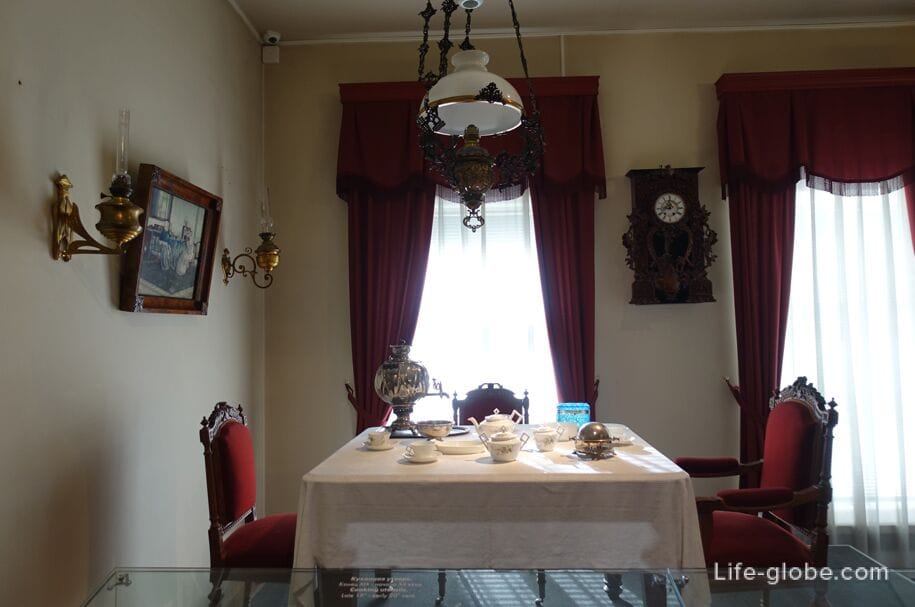


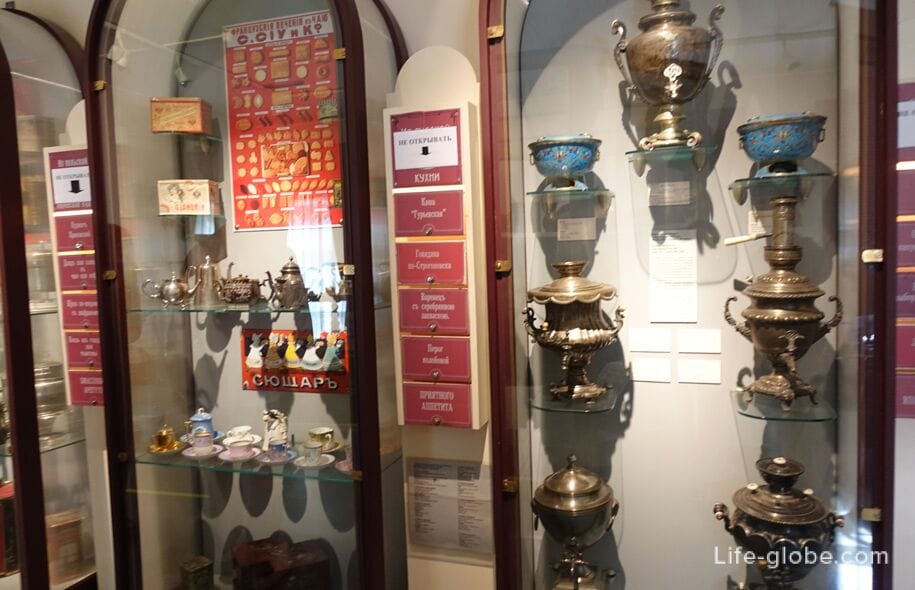


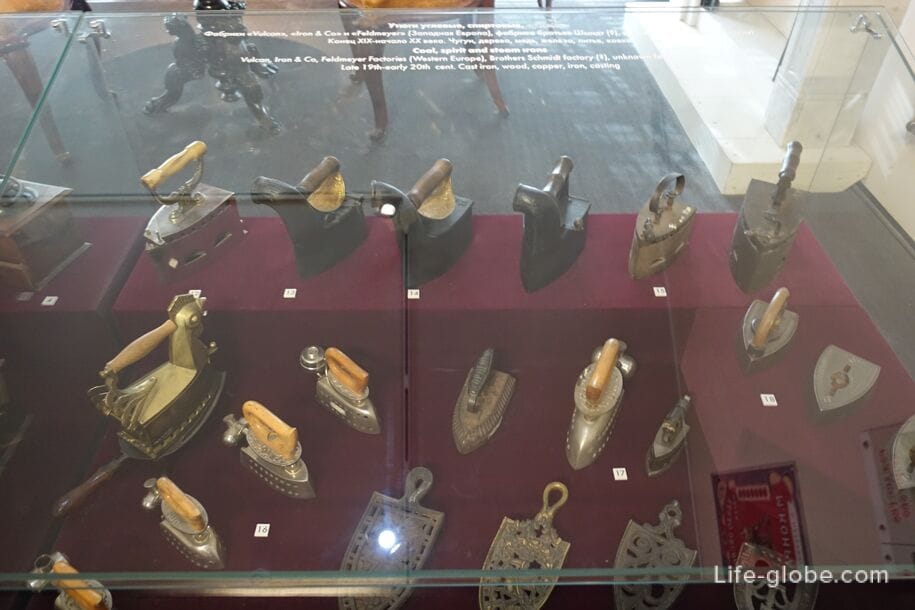
City Amenities Hall».
In the second half of the 19th century, the annual population growth of St. Petersburg was 50-55 thousand people. On the former outskirts, dozens of residential blocks and industrial buildings were built annually. Then the problems of life support of a huge city were very acute.
Due to the lack of running water and sewerage, St. Petersburg often experienced epidemics of cholera and other infectious diseases. In 1858, the Joint-Stock Company of St. Petersburg Water Supply Systems was founded, and in 1863, the first line of the city water supply system was launched in the capital.
In the 1860s, a metropolitan apartment was no longer considered comfortable enough if it did not have a bathroom. Bathrooms were designed in all new homes designed for wealthy residents. The owners of old apartment buildings hastily allocated special rooms for bathrooms: they fenced off part of the living room or kitchen, sometimes the bathroom occupied a whole small apartment. Because of this, the apartments became smaller, but cost more. Standard bathroom equipment often included bidets, urinals, and toilet bowls.
Baths and water closet accessories were made of copper, cast iron, and earthenware, often decorated with paintings or reliefs.
Wood-burning or gas-fired stoves heated the water. Cold water was supplied from a separate tap. Faucets and showers of various systems appeared in the capital at the turn of the 19th and 20th centuries.
Special technical bureaus were engaged in the sale and installation of plumbing in the apartments.
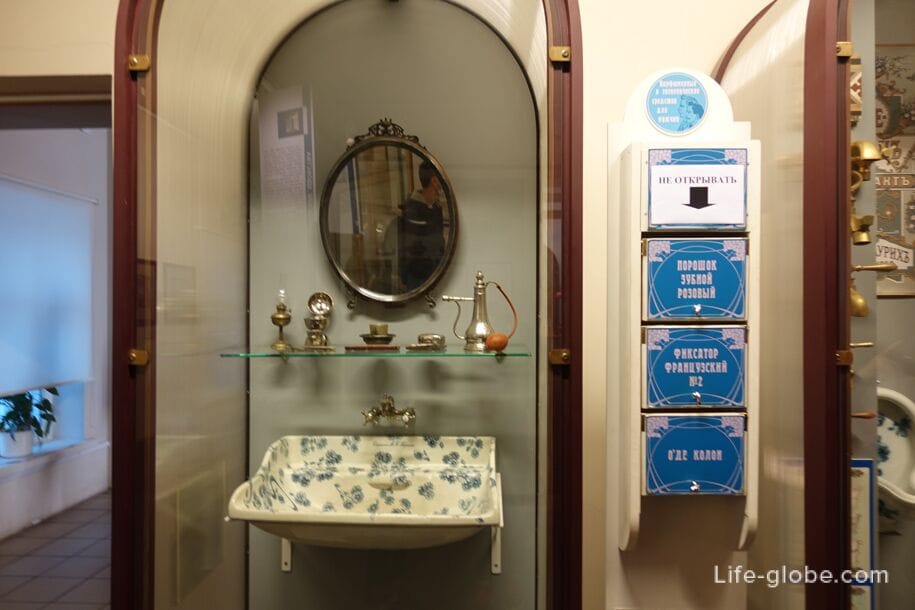
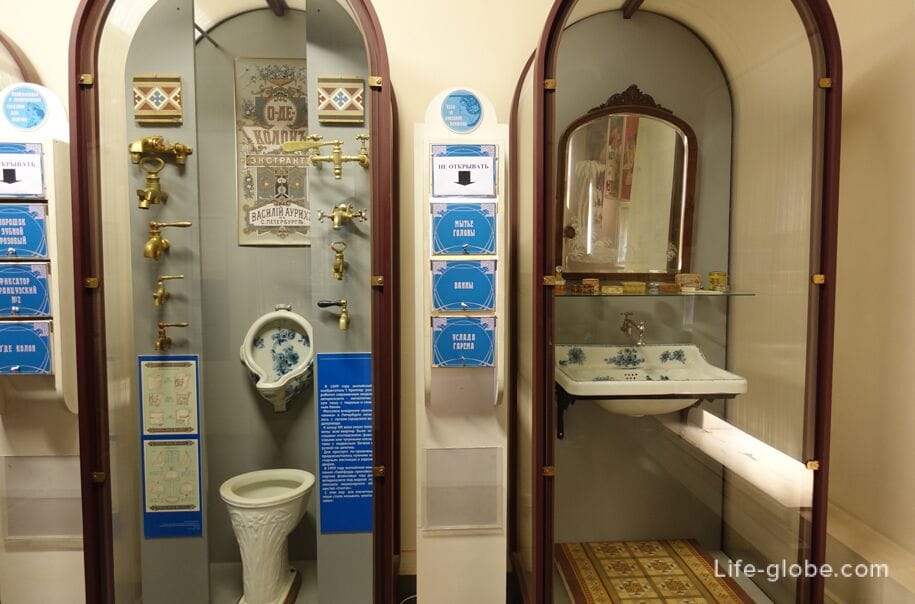

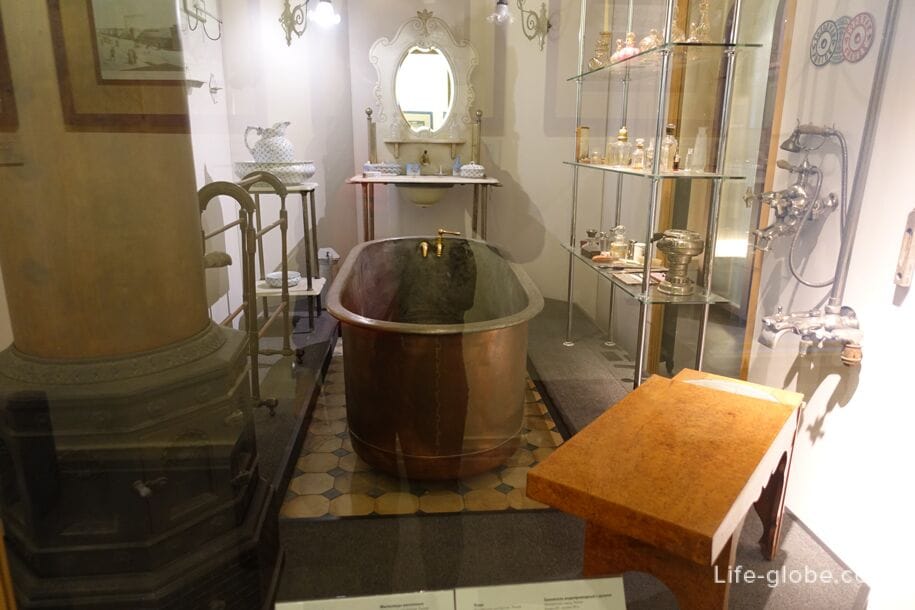

In 1859, permanent gas lamps were lit on the streets, embankments and bridges of St. Petersburg. In 1883, Nevsky Prospekt was illuminated with electricity.
At the beginning of the 20th century, many St. Petersburg apartments had electric lighting, as well as centralized water supply and steam heating batteries.

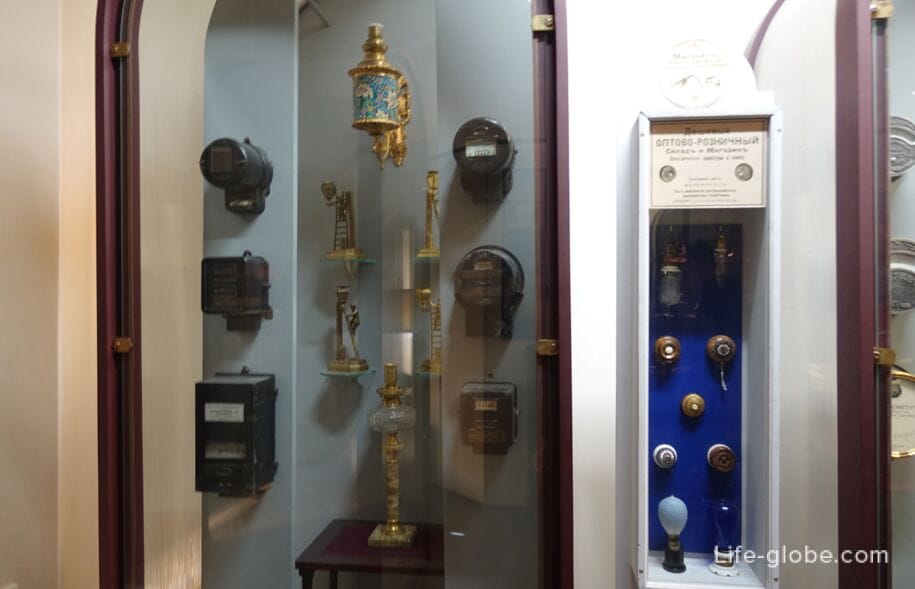
City Transport Hall.
Until the middle of the 19th century, the main mode of urban transport in St. Petersburg was hired carriages. Wealthy citizens had their own trips. Most of the residents moved on foot.
In 1830, the first public transport appeared on the streets of St. Petersburg - omnibuses (from the Latin "omnibus" - for everyone). Open horse-drawn carriages were designed for 6-20 passengers. Since the mid-19th century, an additional platform - the imperial-was installed on the roofs of omnibuses. Such an inexpensive form of transport existed until 1914.
In 1863, horse-drawn railway lines were laid in St. Petersburg (colloquially - "conca"). The horse-drawn cars were more comfortable and warmer than the open omnibuses. Steam-powered trains ran on the outskirts of the city. By 1906, the city had 32 horse-and-steam railway routes with a length of over 150 kilometers.
In 1859, the first automobile arrived in the capital. By 1913, there were already more than three thousand of them. Taxi drivers gradually replaced cabs.
At the end of the 19th century, bicycles and motorcycles appeared on the streets of the city, and in 1907, the first tram and bus were launched.
The city authorities developed "mandatory regulations" - codes of traffic rules for each type of transport, and strictly monitored their implementation.
The car "Benz-Velo". Factory " C. Benz", Mannheim, Germany, 1896. Metal, wood, glass, rubber.
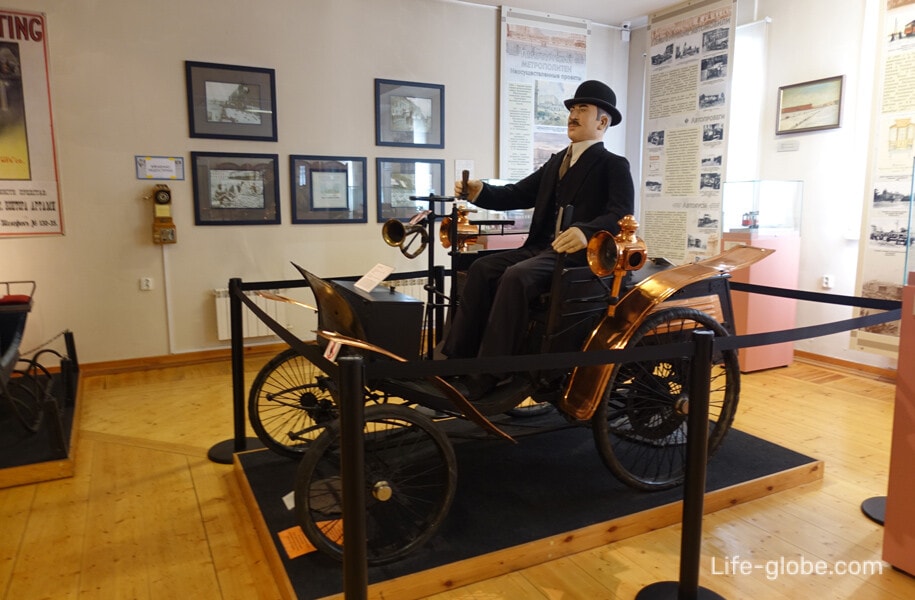

Single sleigh. Russia, late 19th century. Metal, wood, fabric.
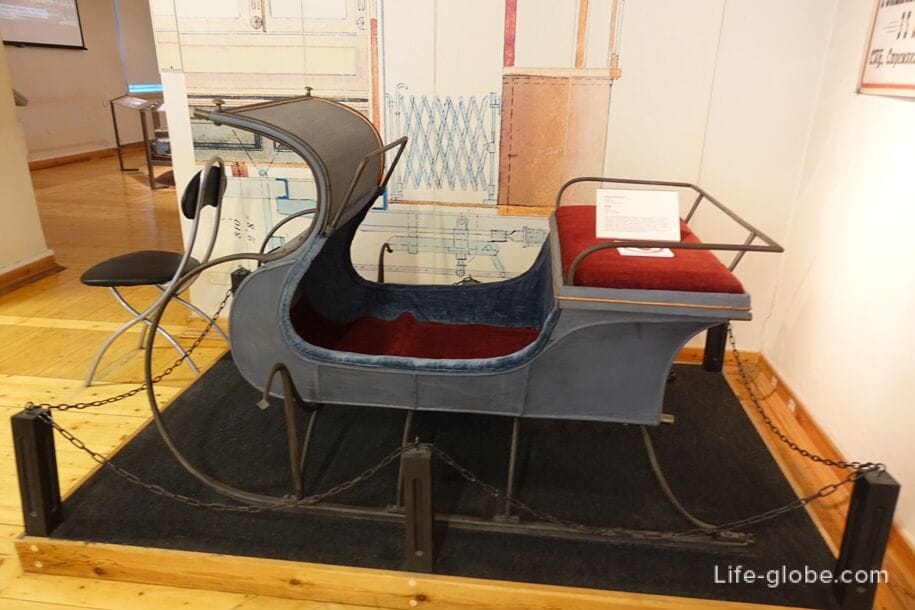
Model of a horse-drawn car with an imperial. 1956, Ya. M. Shur. Wood, metal, paper, cardboard.

Model of the car "Russo-Bol-S24 / 30", produced in 1910. 1958.

Motorist's suit: jacket, leggings, helmet. Late 19th-early 20th centuries.
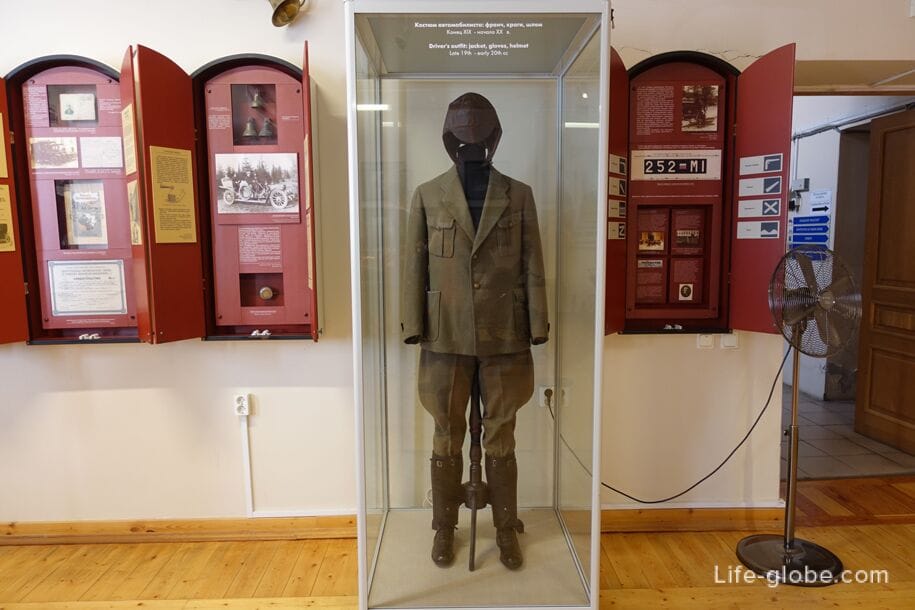
Hall "Architecture at the turn of the century".
The first decade of the 20th century was a time of rapid urban development of St. Petersburg. The grand imperial capital was rapidly becoming a modern metropolis.
St. Petersburg was ahead of many European megacities in terms of population growth and experienced an increased need for new housing. More than 500 buildings, mostly apartment buildings, were erected annually.
Thanks to the construction of permanent bridges across the Neva River and its branches, active development of the suburbs began, but the center still remained over-crowded.
The hall presents a model of a part of the city center.
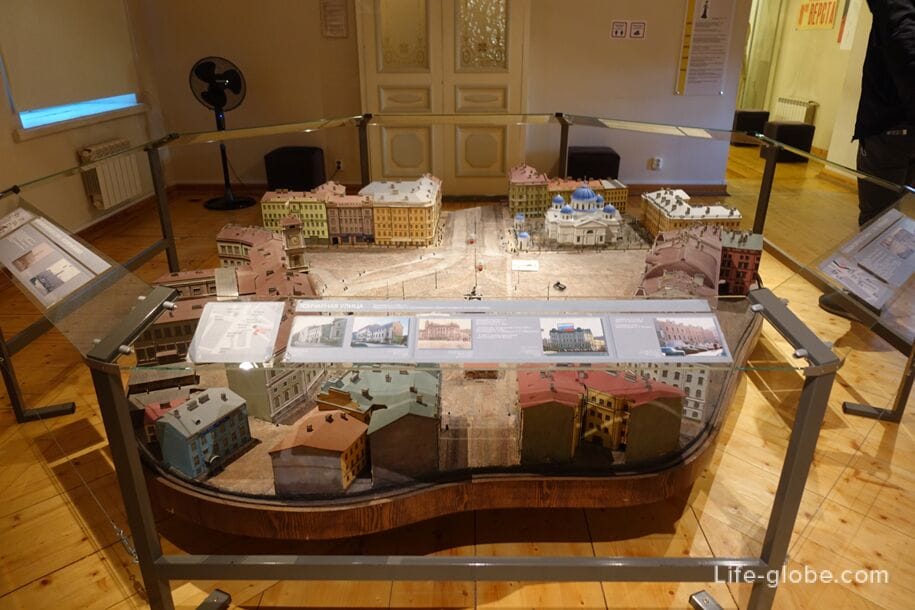


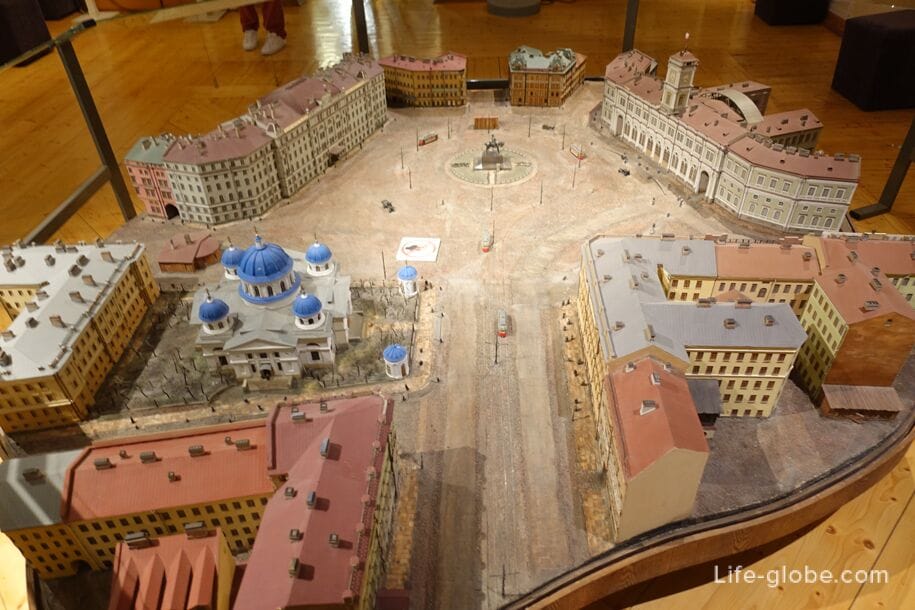
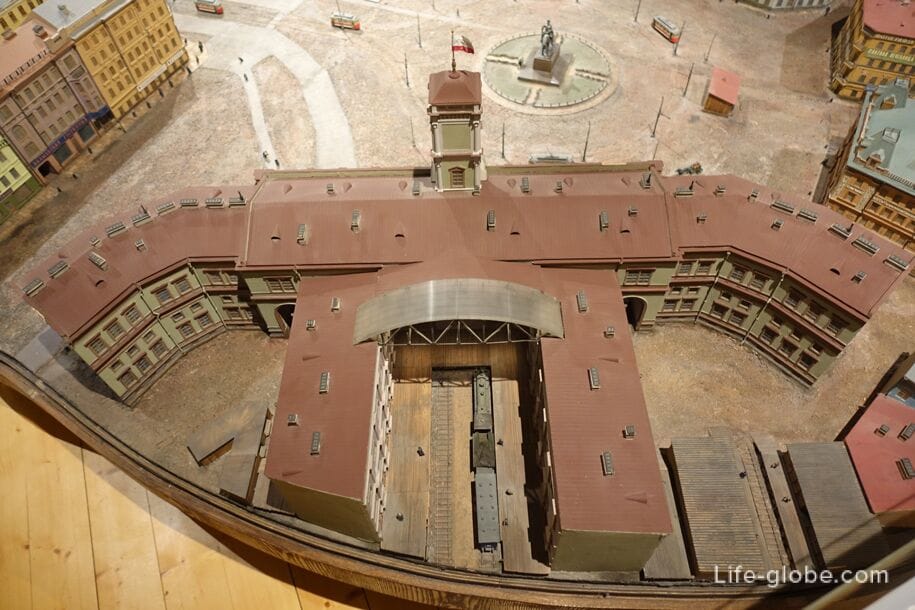
Hall "Russian Art Nouveau style".
The hall presents objects of decorative and applied and utilitarian purposes that filled the living rooms of St. Petersburg apartments in the late 19th and early 20th centuries, which, different in purpose and level of execution, give an idea of the everyday environment of St. Petersburg residents of different social strata and different levels of wealth.

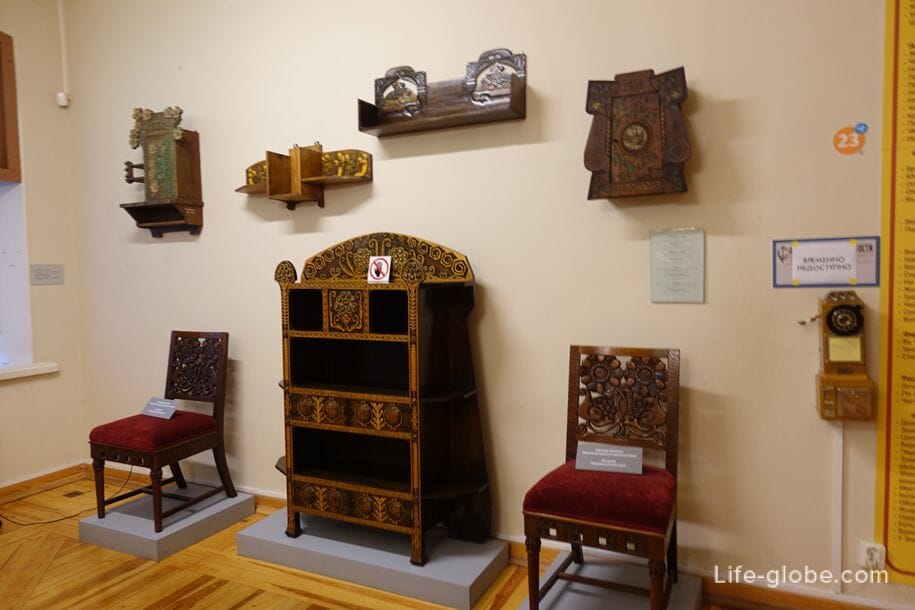
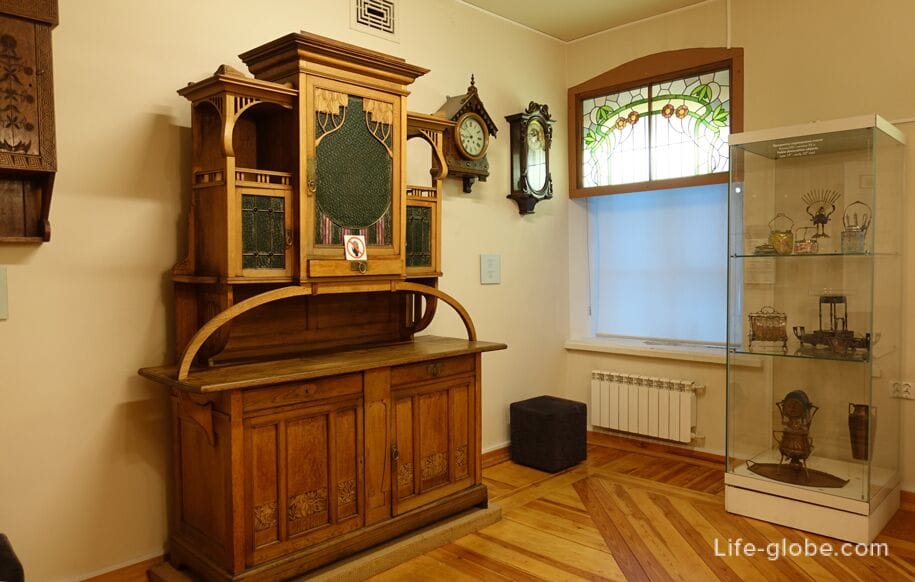
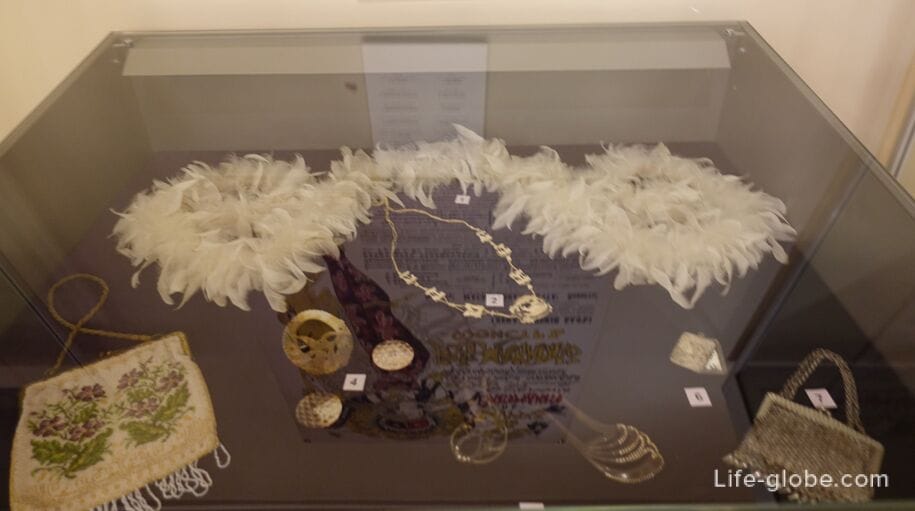
Cinema ass.
In 1896, the first film show in St. Petersburg was held in the Aquarium Garden with a stunning success, and a few months later, the first permanent cinema in the capital was equipped on Nevsky Prospekt. At the sessions, which then lasted 15-20 minutes, they showed the "Lumiere brothers illusion": scenes of the arrival of the train, the exit of workers from the factory, and children playing.
In the 1900s, the cinema programs became more diverse; the sessions began with newsreels and "magazines" - view and commercials, and ended with short feature films, which were called"action films". All the films were foreign-made, mostly French.
In 1907, the photographer A. O. Drankov opened the "cinematic studio" in the capital - the first studio in Russia for documentary and feature films. In 1908, he made the first feature film "Ponizovaya Volnitsa", which began the regular release of domestic paintings.
In the early 1910s, cinema gained unprecedented popularity and became a real entertainment industry: special cinemas were built, equipped with the latest technology at that time, of which, by 1914, there were more than a hundred in the city. The first "stars" of Russian cinema appeared: Ivan Mozzhukhin, Vera Kholodnaya and Olga Preobrazhenskaya.
Photography in St. Petersburg. On January 4, 1839, the newspaper "Northern Bee" reported on the invention of a method for obtaining a photographic image of L.J.M. Daguerre. On October 8 of the same year, the first daguerreotherapy in Russia was performed in St. Petersburg, and in December 1841, the Frenchmen A. Davignon and G. Fauconnier opened the first photo studio in the house No. 3 on Nikolskaya Street.
By 1914, 4 magazines devoted to photography were published in St. Petersburg, there were 30 shops of photographic accessories and 167 photo studios, in which both ordinary and outstanding masters worked, who made a significant contribution to the development of a new art form.

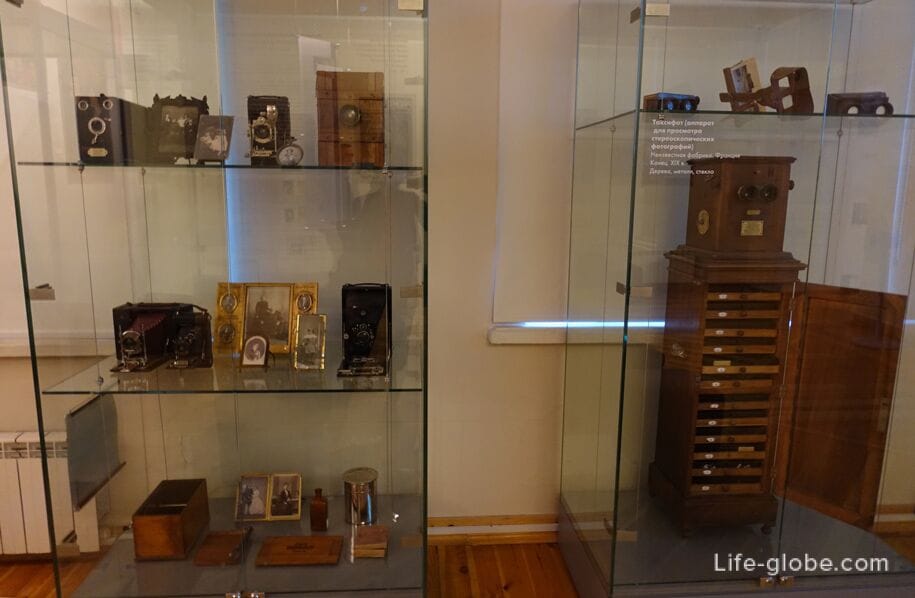

A travel tripod camera with a case and photo cassettes. Workshop "Nevsky depot", St. Petersburg, 1905-1906. Wood, leather, metal, fabric, glass.
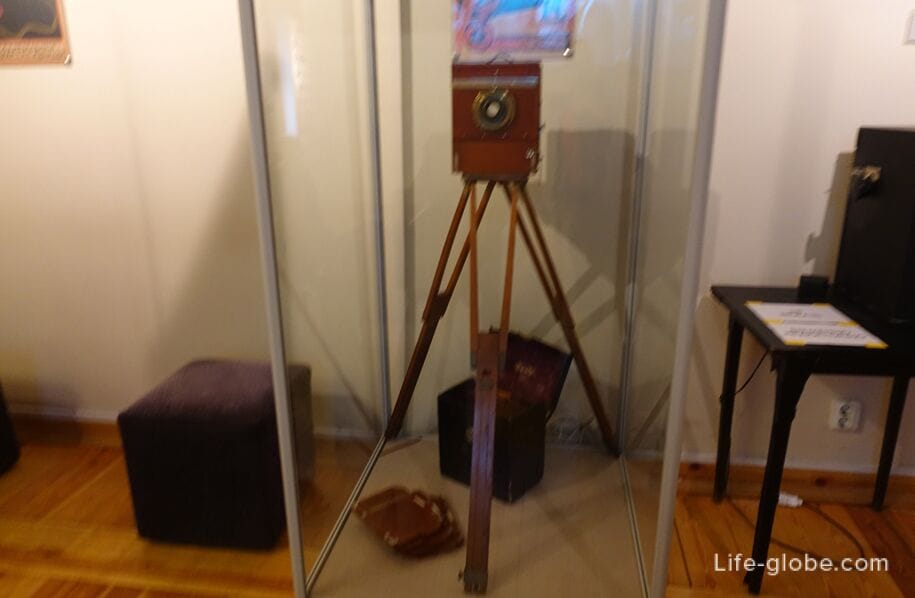
Petrograd Hall.
At the beginning of the summer of 1914, the residents of St. Petersburg, as usual, left for a long vacation in the country, unaware that they would never return to the same city again.
On August 1, Russia entered the war with Germany. The history of the imperial capital has come to an end. The Guards left for the front.


Model of the mansion of M. F. Kshesinsky in the summer of 1917. 1956. Wood, metal, paper, cardboard.
In 1904, the prima ballerina of the Mariinsky Theater, M. F. Kshesinskaya, bought a plot of land on Bolshaya Dvoryanskaya Street and Kronverksky Avenue for 88 thousand rubles. By the end of 1906, according to the project of A. I. von Gauguin, a mansion was built on the site, which became one of the most elegant private houses in St. Petersburg. In the house, the hostess often arranged receptions at which the high society of the capital gathered. On March 11 (24 new style), 1917, the house housed the Central and Petrograd Committees of the Bolshevik Party, the military organization of the party, and the editorial office of the newspaper Soldatskaya Pravda. In April-June 1917, a number of party conferences were held in the mansion under the leadership of V. I. Lenin. On July 4 (17), Lenin spoke for the last time from the balcony of the Kshesinskaya mansion. On July 6, 1917, the mansion was captured by the troops of the Provisional Government, and its premises were destroyed. M. F. Kshesinskaya, who lost all her fortune, emigrated in 1920.
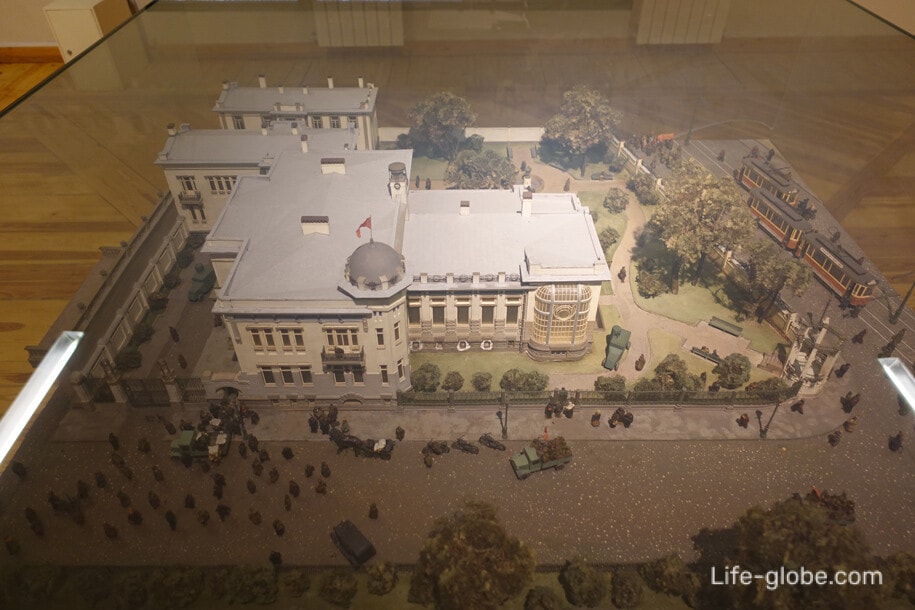
The museum has other halls with exhibitions.
Entrance to the exhibition " History of St. Petersburg-Petrograd. 1703-1918 " paid. You can buy a ticket only for the exhibition or a complex ticket to visit other museums of the Peter and Paul Fortress, including Peter and Paul Cathedral with the Grand Ducal Tomb, Trubetskoy Bastion prison, as well as temporary exhibitions.
Guided tours of the exhibition are provided, which are included in the price of a separate or complex ticket.
We recommend that you check the opening hours of the exhibition and excursions, the cost and conditions of visiting, as well as other information on the official website of the State Museum of the History of St. Petersburg, which includes most of the museums on the territory of the Peter and Paul Fortress, including the exhibition History of St. Petersburg-Petrograd.
Museum website: spbmuseum.
The entrance to the territory of the Peter and Paul Fortress is free (free of charge).
Guided tours of the Peter and Paul Fortress
The exposition in the commandant's house is located in the central part of the Peter and Paul Fortress, at the address: Peter and Paul Fortress, 4.
Nearest metro stations: "Gorkovskaya" and "Sportivnaya".
All accommodation facilities in Saint Petersburg, including in the city center and near the Peter and Paul Fortress, can be viewed and booked here